

The State of Distribution
A conversation on where we’ve been, where we are, and where we’re going as an industry.

Many rapid diagnostics
world so be a superhero to your customers
offering a domestic supply option.
Made in the USA, OSOM® Rapid Tests are
dependable which helps you meet your customer’s needs without the long journey.
They also save money with our unique QC
feature included in many of our kits; two extra tests for external QC



The State of Distribution
26 Communication Blunders
The top 10 communication mistakes medical salespeople make, and how to fix them.
28 Learning to Love Rejection
If you persevere through rejection, your audience (and success) will emerge.
30 Successful Sales Leaders are Exceptional Followers
How you listen and treat your customers matters just as much as what they say during a sales conversation.
13
network of independent primary care practices in the nation, is valued at $3.5B.
` NEXTGEN SALES
14 New Horizons
Fisher Healthcare’s JP Espinosa isn’t afraid to tackle new challenges in the med/surg market.
18 Taking Ownership
Whatever the market conditions, Midmark’s Adam Toney is committed to delivering value to today’s U.S. healthcare providers.
` SALES
22 Selling an Experience to Remember
How to use the customer experience to enhance your sales opportunities in 2024.
32 How to Leverage Strategic Thinking for Your Organization
Leadership and sales advice from The Cure Podcast
` TRENDS
42 Patients with Disabilities: An Unmet Need
Physicians may be technically ADA-compliant, but that doesn’t mean they are meeting the needs of their patients with disabilities.
` BY THE NUMBERS
47 Parkinson’s Disease
April is Parkinson’s Disease Awareness Month, in observance of those living with the degenerative neurological disorder.
` IDN INSIGHTS
48 The Long Game
Banner Health’s Doug Bowen has been a lifelong student of supply chain and created a lasting legacy that’s benefited both his organization and the industry at large.
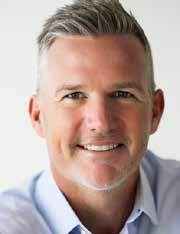
The Legacy We’re Building
I recently had the pleasure of speaking with Brad Hilton, the 2024 HIDA Chairman of the Board and Matt Rowan, the president and CEO. The three of us had a wide-ranging discussion on distribution and the med/surg community. We covered a lot of ground – the value of industry relationships, collaboration among stakeholders and the government, and legislative issues to watch were some of the topics. We’ve got a recap of podcast on page 34 of this issue.
When the future of distribution came up, both Brad and Matt really leaned into the topic. They mentioned that during a recent board meeting, several leaders brought up the idea of offering scholarships for college students to attend upcoming HIDA events to get a feel for the industry. So, the association sponsored 11 college juniors and seniors from around the country to attend its recent MedSupplyChain Conference. These students got to spend time with the government leaders, distributors and suppliers, and immerse themselves in the conversations.
How we think about the next generation of talent today is an important part of tomorrow’s supply chain, and something that is top of mind for Brad and Matt. “How can we be a little bit more proactive, rather than reactive, on hoping that talent is in the industry?” Brad told us.
Some of tomorrow’s leaders are already in the field calling on accounts. This year we’ve made it a priority to reach out to these NextGen reps and get their insights. In this issue we feature Fisher Healthcare’s JP Espinosa, and Midmark’s Adam Toney. You’ll want to read their thoughtful responses on what it takes to succeed in a postpandemic market.
Plus, if you haven’t already, be sure to check out the podcasts that Brian Sullivan and I are doing with familiar names from the industry, sales experts, authors, athletes, and more. We’ve dubbed it The Cure with Scott and Sully, and it’s available on iTunes and YouTube.
Dedicated to the Industry, R. Scott Adams
Repertoire www.repertoiremag.com
editorial staff
editor
Mark Thill mthill@sharemovingmedia.com
managing editor
Graham Garrison ggarrison@sharemovingmedia.com
editor-in-chief, Dail-eNews
Jenna Hughes jhughes@sharemovingmedia.com
art director
Brent Cashman bcashman@sharemovingmedia.com
circulation
Laura Gantert lgantert@sharemovingmedia.com
senior sales executive
Amy Cochran (West Coast) acochran@sharemovingmedia.com (800) 536.5312 x5279
sales executive
Aili Casey (East Coast) acasey@sharemovingmedia.com (404) 625-9156
publisher
Scott Adams sadams@sharemovingmedia.com
(800) 536.5312 x5256
founder
Brian Taylor btaylor@sharemovingmedia.com
Subscriptions
www.repertoiremag.com/subscribe or (800) 536-5312 x5259
Repertoire is published monthly by Share Moving Media 350 Town Center Ave, Ste 201 Suwanee, GA 30024-6914
Phone: (800) 536-5312, FAX: (770) 709-5432; e-mail: info@sharemovingmedia.com; www.sharemovingmedia.com


Today I Will
How small changes can lead to big gains in your personal and professional life.
 In this column, “today I will” provide coaching on how to increase your productivity, sales performance and peace of mind – while growing your business in the process. This column will not focus on lab products, but on the state of mind needed to harness your internal power to sell more and live at your highest level of performance and satisfaction. That may sound like a tall order, but read on and let’s see if I can deliver on this promise.
 By Jim Poggi, Principal, Tested Insights
By Jim Poggi, Principal, Tested Insights
The guidance I intend to provide has worked well for me and countless others in a wide range of endeavors in sales, athletics, adventures and exploration, and so many other areas of life. It’s all about a conscious decision to make tiny changes in how you manage your life. These small changes ultimately result in delivering a different, more efficient and confident mindset that you can harness to achieve your goals.
This is not to be confused with a rousing group “positive
thinking workshop.” While I have attended my share and felt the adrenaline rush during the meeting and shortly thereafter, without committing to make changes in my attitude and daily habits, my enthusiasm faded rapidly. This column will focus on taking a continuous series of small steps and committing to reinforce these behaviors daily to achieve results.
Better and better
There is ample proof all around us that the human will can cause a person to perform at extraordinary levels. In sports, we often see examples of record-breaking new benchmarks eclipsing records previously considered impossible to break.
The first acknowledged record keeping for the mile run took place in 1850 with a time exceeding 4:50. The next recorded time was 4:28 in 1855. The first sub four-minute mile was run in 1954 by Roger Bannister, in 3:59.4. Incredibly, the next two runners to run sub four-minute mile did so only two months later. Fast forward to 2024 and 1,755 athletes have run the mile faster than 4 minutes. The mile record today stands at 3:43.13 seconds.
To a certain extent, it proves that expectations and your personal mindset have a profound impact on outcomes. We witness it all the time, but the progression of faster speeds in track at virtually every distance proves this rather conclusively. Other athletic endeavors have experienced similar progressions in performance.
While dedicated, highly trained and motivated athletes have shown the way to harness will power, there are other, more remarkable examples of humans conquering nearly impossible
odds and proving that “mind over matter” is not just a clever turn of phrase. There is a plethora of examples of wartime performance by both combatants and civilians that further demonstrates that will is a powerful force. Whether it is one soldier or small unit outnumbered but winning the battle, to civilians and prisoners of war determined to survive dire circumstances, the human will drives outcomes and results in shining examples for each of us to consider as proof that difficult is not the same as impossible. Sometimes the adversary takes the form of the forces of nature arrayed against man’s desire to explore and learn more about the world around us. At the turn of the 20th century, the South Pole was an exciting and largely unknown frontier. It was first successfully reached in 1911 by Roald Amundsen. Sir Ernest Shackleton had twice failed to reach the South Pole in the years leading up to his third attempt in 1914. The expedition to reach the South Pole was both a scientific journey and an attempt at redemption for Shackleton leaving Plymouth, England on Aug. 8, 1914, on the ship Endurance .
The journey was beset by obstacles including brutal cold, a 10-month stranding on an ice floe, loss of his ship Endurance when it was crushed by the ice around it and a subsequent small boat open ocean mission to find a settlement known to be on Elephant Island to engage a rescue for the entire crew. As luck would have it, the Shackleton party made it to Elephant Island but landed on the wrong side and needed to march miles to reach the settlement and get help. Their
brutal experience ended on Aug. 30, 1916, more than two years after setting out on their mission. While they never did make it to their original destination, remarkably every single member of Shackleton’s Endurance crew was safe at journey’s end. Faith, commitment and the positive attitude of Shackleton and his team overcame odds stacked against them and gave us a remarkable story of survival that still amazes and inspires.
to engage the multiple stakeholders in the capital sales process to create a win-win result for both the prospect and the salesperson. It was only when I read this wellwritten sales text and adopted the sales process it explained that I was able to turn my sales career and win rate around. My “today I will” moment was when I decided that “today I will” set my preconceived notions of sales textbooks aside and find a sales process I can
I found sales training courses I had attended to be more oriented to finding clever ways to get the customer to agree and buy than opportunities to have a clearly laid out sales process that I could use.
A turnaround
My personal experiences are not nearly as remarkable, but do provide some reinforcement that “today I will” works equally well when the outcomes are far less dire. Two examples can demonstrate the impact of “today I will” on my life. Early in my career as a salesperson, I relied heavily on my background as a lab tech to create a relationship and kinship with my customers and prospects. I found sales training courses I had attended to be more oriented to finding clever ways to get the customer to agree and buy than opportunities to have a clearly laid out sales process that I could use. Over time, my competition was able to overcome my technical advantage and I lost deals I should have won.
I finally found a sales text that I could relate to and believe in. The text explained how to use a highly disciplined and detailed process
believe in, and that “today I will” use it in my daily sales activities. My second “today I will” moment came when I took my first job as a product manager. Again, I was confident my technical background and experience in sales would make me successful and that I would find this new career path easy, fun and rewarding. Early on, I learned that product management had several important daily tasks that were anything but fun: revenue reports, quarterly business reviews, meetings with regulatory about product issues and returning challenging calls to unhappy sales reps and their customers became the antithesis of the job I thought I wanted. For a period of time, I made my daily task list and put these items toward the bottom of the list. The result: I either got them done in the nick of time or completed them with a halfhearted effort. I was floundering
and I knew it, but overall I liked the job and thought I could do it. My “today I will” moment? It was “today I will prioritize ONE difficult or unpleasant task before I engage in any of the activities I like more.” At first, I was concerned that my day would only consist of a struggle to get one ugly task behind me and never get to the fun stuff. It took a few months of exercising my new discipline to get comfortable with this approach and to make it a confident part of my daily routine. Soon, my productivity shot up, I was rewarded with the confidence of management and the respect of my peers. As importantly, my product lines grew faster than others and skills I struggled to master earlier became second nature and every day became easier to manage and master. I conquered my fears, became more confident, began to like my job as much as I thought I would, and my career grew as my skills and confidence grew.
I also took on one other discipline in the process. After dodging delivery of “bad news” early in my management career, I finally learned to deliver bad news as quickly as possible with a clear message of what happened, my responsibility for the situation, how it could have been avoided, what next steps look like and what the most likely outcome could be. I use this process to this very day and it has become a trusted friend. Both my internal customers and my vendors know they can count on me to deliver the news promptly when it is bad and needs management, and at the right time when it is good and deserves celebration. This results in respect and better collaboration across the board.
The right outcome starts with the right test.






*In the USA, the BD Veritor™ System for Rapid Detection of SARS-CoV-2 has not been FDA cleared or approved but has been authorized by the FDA under an Emergency Use Authorization for use by authorized laboratories; use by laboratories certified under the CLIA, 42 U.S.C. §263a, that meet requirements to perform moderate, high, or waived complexity tests. The product is authorized for use at the Point of Care (POC), i.e., in patient care settings operating under a CLIA Certificate of Waiver, Certificate of Compliance, or Certificate of Accreditation.
This product has been authorized only for the detection of proteins from SARS-CoV-2, not for any other viruses or pathogens; and, in the USA, the emergency use of this product is only authorized for the duration of the declaration that circumstances exist justifying the authorization of emergency use of in vitro diagnostics for detection and/or diagnosis of COVID_19 under Section 564(b)(1) of the Federal Food, Drug and Cosmetic Act, 21 U.S.C. §360bbb-3(b)(1), unless the declaration is terminated or authorization is revoked sooner.Unt. Viverteatum dem vit atatimoente tionesta nitant? Etiam. Ox notili pes ego auterit anterfe ciocaeque furnia pultur, sum ina, unclest involudem, ut publicio et in stis culese perficiae patiamd ienatore, non vem deatiem Romnos, nesi sedius tem condit.
Action Plan
Many of us can take this sort of conceptual information and framework and develop our own plan without any more help. Some of us, myself included, need specific examples to spark our thinking and get our creative energies going. Here are a few ideas I hope will be food for thought on useful “today I will” tactics.
In my professional life
Today I will list five customers I want to reinforce my relationship with. Today I will make that list and today I will commit to meet with each of them in the next 30 days and interact with them as if they were new customers.
Today I will make a list of a few (maybe five) products I do not sell confidently and set work with dates for each of the key manufacturers of these products to make realistic prospect sales calls in the next 30 days.
In my personal life
Today I will actively seek coaching and guidance from a person I admire. It may be career coaching, help with a habit I want to break and just help with self-awareness, but today I will seek coaching to continue my development.
Today I will look back on one relationship that needs improvement for one reason or another and today I will reach out to that person and seek ways to improve that relationship.
Today I will read something I have wanted to read but have not taken the time to read. It could be a sales text, a work of fiction, a biography, a best
Today I will make my own list of the products my most highly penetrated customer uses and review this list against five of my less penetrated customers.
Today I will set up time to list and review some of the higher volume products my less penetrated customers are NOT using. Today I will NOT try to sell these products to these customers but today I will create a list of questions to ask to learn more about WHY they are not using these products.
seller, or a book of cartoons. I just need to open my mind to something I have wanted to think about and enjoy.
Today I will make my own short list of things I need to do in order to enjoy life more, become more productive at work, share the love with someone I want to open up to, learn something or just to deliberately engage in goofing off. Today I will make the choice to make today I will a life habit.
Today I will step out of my lab-focused comfort zone, share some personal thoughts and try to make a difference for you.

IMPROVED QUALITY METRICS ARE WITHIN REACH
We can do better.
73% of US patients with diabetes are not meeting targets for glycemic, blood pressure or cholesterol control1 and less than 7% are tested at the guidelinerecommended frequency for HbA1c. 2
Coaching and compliance are key.
HbA1c testing at the point of care (POC) allows your customers to better achieve ADA guidelines. Data shows patients who are managed in compliance with the guidelines are over 5 times more likely to achieve a recommended HbA1c under 7% . 2
Afinion™ 2 is the market leader in CLIA-waived HbA1c testing. With highly accurate results in as little as 3 minutes, your customers can more easily manage their patients according to ADA guidelines at the POC, achieving improved quality metrics and better patient outcomes.
REFERENCES: 1. Ali MK, Bullard KM, Gregg EW, del Rio C. Ann Intern Med 2014;161(10):681-9. 2. J. Lian, et al. Curr Med Res Opin . 2014;30(11):2233-40.

Contact your Abbott Account Executive or scan the QR code for more information about the Afinion 2™ Analyzer.
Storage Solutions
Whole room design with Midmark.
 Primary care facilities are designed with a distinct purpose in mind – improving patient care. From the outset of the design and construction process, blueprints are drawn up to optimize workflows within the front office, lab space, and patient rooms to ensure that each touchpoint operates efficiently. A critical piece of this puzzle is the cabinetry.

While it may seem like a trivial detail in the grand scheme of the whole room design of a primary care office, the reality is that proper medical cabinetry plays a larger role in the efficiency and optimization of a primary care facility. Midmark introduced their Synthesis® Wall-Hung Cabinetry in 2022, a series of optimized cabinetry solutions designed to improve the room’s look and storage and significantly improve patient care processes.
The room design of the primary care space is critical to the patient and caregiver experience –the role of an optimized workspace cannot be underestimated. In fact, the efficiency and the utility of the room all comes down to a basic series of design-based decisions. In order to remedy this pain point for your primary customers, sales reps need to understand the value of cabinetry and what it takes to improve the storage space and workflow of a primary care office.
Brian Hazelwood, Marketing Manager for Midmark, said, “Cabinetry can be designed with a focus on both the patient and caregiver to help improve workflow and efficiency. For the patient, an improved workflow means more facetime with the
caregiver and a feeling of focus and care in the visit leading to higher patient satisfaction. For the caregiver, cabinetry designed for their average height1 allows for better reach and visibility to the storage in the room and can improve safety for staff.”
The value of cabinetry
Cabinetry is usually installed in the primary care space during the facility's construction phase, which can often result in the general contractor bidding cabinetry to subcontractors for the lowest cost option that meets the needs of the space and the architect of the facility. While the cabinetry layout is decided based on workflow needs and space constraints, the quality of the cabinetry is decided on the budget of the healthcare organization.
More often than not, healthcare organizations are looking to cut costs wherever they can. And why not? With healthcare spending through the roof for the past several years, finding ways to reduce expenses for something as simple as cabinetry seems like an easy decision to make. Unfortunately, cabinetry at a lower price point may not be designed to the specific needs and requirements of the medical field.
Hazelwood said, “Human interaction between the patient and caregiver in the exam room is especially important–the layout and equipment in the exam room can impact this interaction. Exam chairs, diagnostic equipment, workstations, cabinetry and seating all impact this human interaction. In the case of cabinetry, to meet the needs of the caregiver and patient, it should be designed and built for the clinical space.”
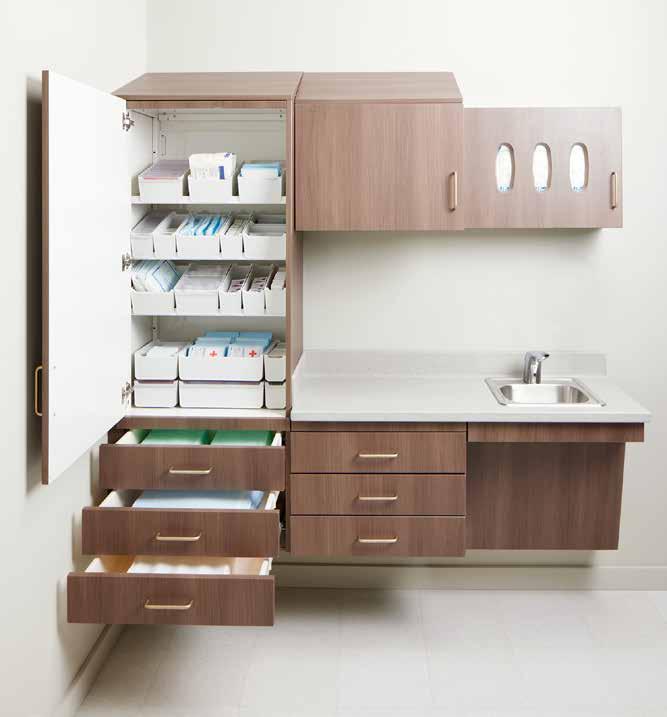
Cabinetry designed to fit into the caregiver’s workflow should be flexible and adaptable to the space, while offering efficient supply organization options. Additionally, it’s important for the cabinetry options to be designed with the ergonomic needs of the caregiver in mind, as well as the durability required to function in a clinical setting.
As healthcare organizations continue to adopt modular building concepts, introducing modular cabinetry into the primary care setting is a simple way to improve the adaptability and flexibility of the caregiver’s workspace. The needs of the space may have to change over the course of time, but consumer-grade cabinetry will not be able to change with it. Modular cabinetry is designed to
flow with the rest of the workspace – if something changes in the flow of the room or the cabinetry needs to be removed altogether, modular units are the best option.
Leveling up the storage space
One of the greatest enemies of the primary care space is inadequate storage. This acts like a ripple effect, where numerous touch points down the line are affected in profound ways. There are plenty of reasons why primary care offices are space-challenged. Whether it’s the result of storage not being a priority in the design phase of the facility, cabinetry that isn’t designed for the primary care space, or the fact that some older facilities were simply
not built to handle growth and increased patient volume, it’s a looming challenge that can create serious disruptions to clinical workflows and patient care.
Primary care visits can be difficult for patients in a variety of ways, and a cluttered environment will only exacerbate any anxiety or apprehension that people can feel about doctor’s offices. Patients need to feel at ease about the quality and level of care that is being provided, and it’s difficult to convey high-quality when the space is disorganized and messy due to inadequate storage.
Inadequate storage also significantly impacts the well-being of the clinical staff in the office. Because clinical work can be mentally and physically demanding, it’s important to ensure that the clinical design is conducive to a healthy work environment. Storage issues can decrease productivity and create chaos within the facility, leading to stress and potential injury to the clinical workers.
The Midmark cabinetry solution
Midmark works to provide practical solutions to the dynamic challenges faced by the clinical

1 www.census.gov/library/stories/2019/08/your-health-care-in-womens-hands.html
sector. With an evidence-based design approach, Midmark works closely with healthcare staff and ergonomic experts to design exam room equipment that provides an added layer of safety and efficiency for the exam room.
“Midmark designed its cabinetry for medical use to be durable in the clinical space and support effective infection prevention protocols,” Hazelwood said. “Consumer-grade cabinetry is designed for general usage in the home or office and lacks the infection prevention and durability qualities required for clinical spaces. Midmark cabinetry is modular and can be reconfigured or moved to meet changes that clinics frequently face. It is designed with flexibility in mind, accommodating the changing needs of the medical space whether moving from one facility to another or renovating the current space.”
The Synthesis Wall-Hung Cabinetry is designed for healthcare workers who will frequently interact with the cabinetry in the medical space, which creates a better caregiving experience at the point of care. This line of cabinetry features base and tall cabinets that optimize the most-used areas of storage for easier reach by physicians and staff.
This line of cabinetry is designed to adapt to the needs of the clinical staff, not the other way around. With all the obstacles medical staff face each day, they need a storage solution to help keep their supplies organized and workspaces uncluttered, ensuring that they can focus on the most important – taking care of their patients.
Scaling Value-Based Care
Aledade, the largest network of independent primary care practices in the nation, is valued at $3.5B. By
Daniel Beaird Bethesda, Md.-based Aledade became the nation’s largest network of independent primary care practices in early 2023. The networked commercial healthcare provider (CHP) claims more than 2 million patients through over 150 value-based contracts by Medicare, Medicare Advantage, Medicaid and commercial payors, and networks over 1,500 independent primary care practices, close to 60 health centers and more than 5,000 physicians and 15,000 clinicians in 45 states and Washington, D.C.
Public benefit corporation
It is a public benefit corporation (PBC) founded in 2014 and works with primary care providers to build tech-enabled accountable care organizations (ACOs). For-profit PBCs adopt a public benefit purpose and must consider the non-financial interests of its shareholders and other stakeholders when making decisions. They must weigh their social and environmental objectives alongside maximizing value for shareholders, while detailing how well they are achieving their overall public benefit objectives.
Aledade CEO Dr. Farzad Mostashari said the corporate structure of a PBC is well-suited to mission-oriented companies where alignment with stakeholders is a key driver of the business model. Aledade represents 50% of the ACOs and 73% of patients in the top 10 ACOs in the Medicare Shared Savings Program (MSSP) by savings rate, and practices in Aledade ACOs earned $294 per Medicare beneficiary, which is almost double the average of $140 per Medicare beneficiary across the MSSP.
Regionally, practices in Georgia working with Aledade

performed above the national average in depression followup, blood pressure control, falls screening, colorectal cancer screenings and Statin therapy. In Mississippi, practices working with Aledade led the nation in providing Annual Wellness Visits to their patients, and Arkansas, Michigan and Utah MSSP Enhanced ACOs provided care to the most patients of any ACO in the top 10 of MSSP ACOs.
Funding rounds, acquisitions and a new hire from CVS Health
Aledade is valued at $3.5 billion and secured $123 million in a Series F funding round in June 2023.
The company is using the funds to accelerate the growth of its strategic alliances and primary care network, and to acquire and improve technology and services to support
its value-based care solutions. It generated revenue of more than $475 million for 2022, representing more than 50% growth compared with revenue in 2021.
“After a decade of experience with different value-based models, it’s clear what works – giving primary care accountability for the total cost and quality of care,” said Dr. Mostashari in a statement. “We founded Aledade in 2014 on the premise that we can scale the success of value-based primary care.”
Aledade acquired Curia in 2022, an AI-enabled value-based care analytics platform, to utilize its data gathering, provide more accurate data predictions and help enhance primary care workflows. It also purchased Iris Healthcare in 2022, an advanced care planning solutions platform, that became part of its health services unit called Aledade Care Solutions.
Rosemary Wheldon, formerly vice president of digital health product management for CVS Health, was named chief product officer in December 2023 for Aledade. She has oversight of UX design, impact analysis, product management and related personnel and leads updates to the company’s app.
New Horizons
Fisher Healthcare’s JP Espinosa isn’t afraid to tackle new challenges in the med/surg market.
By Pete Mercer Starting out in a new industry is always an exciting time for any young professional – you are full of bright-eyed optimism and fresh energy for overcoming challenges, while still figuring out your place in the grand scheme of things. It can also be challenging to find your footing on unfamiliar ground, unsure about each decision you make.
That’s the beauty of this point in your career. Everything is up to you! While that might not be reassuring to everyone, it’s important to note that while these are important moments in your life, they’re not defining moments. You can always pivot, like JP Espinosa did from international shipping to national account executive for the healthcare industry.
Espinosa is an account executive for Fisher Healthcare, the division of Thermo Fisher that services the Clinical Laboratory testing marketplace.
Repertoire Magazine recently sat down with Espinosa to discuss his role at Fisher Healthcare, the importance of communication in a remote environment, and what he looks for from his leadership team.
Landing in the industry
Espinosa started as an inside sales rep with Thermo Fisher and Fisher Healthcare in 2018. Before landing in the healthcare space, he was in international shipping with Norton Lilly International and recruiting for his alma matter, Spring Hill College. Despite learning a lot in those roles and the potential

for growth, Espinosa felt that he lacked a sense of purpose. He found a connection at Thermo Fisher through a family friend who was a rep at Fisher at the time. After learning more
about the role, he applied and has been at the company for about five years now. Based in the North Hollywood part of Los Angeles, Espinosa is now an account executive for Fisher Healthcare.
Describing the role, he said, “I make sure that my customers in laboratory spaces, acute and nonacute, are taken care of. We leverage our distribution portfolio to provide solutions to their ever-changing needs, whether it’s helping with back orders on microscope slides, evaluating new chemistry instrumentation, or bringing in testing that’s currently being sent out. You name it.”
Because his true office is the laboratory of his customers, Espinosa considers himself a remote worker. Wherever the lab goes, he goes. He calls on affiliated medical office buildings, independent reference labs, physician-owned labs, hospitals and acute care settings. As a remote worker, he understands the essential need for clear communication across the board.
Communication in the time of COVID
As we all know, COVID disrupted just about everything – especially face-to-face business meetings. While Zoom became an acceptable alternative, nothing beats the in-person meeting. Now that the pandemic has passed, it’s more important than ever for sales reps to get in front of their customers. Relationships mean everything in this business. If nothing else, sales reps absolutely have to be available and reliable for anything they need.
“We work with every department in the lab. During business reviews with department heads we regularly hear about staffing issues and the effects it has on their operation.”
He said, “We learned how fragile and vulnerable supply chains can be and what that impact can have on our customer’s operations, so our ability to consistently but effectively communicate and relay information that is relevant to their market is an effective value add that we can provide that is sometimes overlooked.”
Part of what Espinosa discusses with his clients is the new innovations and technologies available from Fisher Healthcare to the laboratory. As the unsung hero of the medical industry, labs need to


































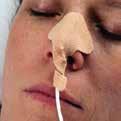













stay on top of evolving tools that will help them to provide more accurate diagnostic testing and improved workflow processes to improve efficiency and outcomes.
“You have to be reliable,” Espinosa said. “No one is going to want to work or do business with you if you do one thing and say another. Try to under-promise and over-deliver, be present and leverage your portfolio to offer solutions.”
Because he started in 2018, he saw a sort of transformation of needs for the lab from pre-pandemic, mid-pandemic, to post-pandemic. Espinosa had an advantage for his customers during the pandemic because he was used to working remote – he covered his Los Angeles district from the Pittsburgh office when he started out.
from customer service for example, to answer questions about inventory availability or proposing product alternatives.”
Now, the challenges and obstacles have changed. It’s not as difficult to get products as it was, but it is harder to staff the labs. The human resource is dwindling more and more as lab techs face serious issues of burnout. He said that you could walk into just about any lab and find a common thread of lab leadership having a hard time with staffing problems.
“We work with every department in the lab. During business reviews with department heads we regularly hear about staffing issues and the effects it has on their operation. We’ve helped labs increase productivity through the evaluation and implementation
“ Our success as distributors relies on staying current, staying up to date with what’s latest in our industry, and leveraging our deep commercial product portfolio to enable our customers to meet their clinical, operational and financial needs.”
Even when he moved to Los Angeles in 2019, that time in Pittsburgh proved to be invaluable for working through the pandemic. He said, “I was used to working remote and was very comfortable with the new reality. Customers were always looking for updates on back orders and products that were on allocation. Having spent a year in inside sales, I could navigate all of our CRMs independently with ease so I didn’t have to rely on someone
of automation. Lab automation enables laboratory professionals to optimize their time to perform higher-values tasks, improve turnaround time and enables growth without adding more staff.”
Professional development and leadership
Part of what Espinosa uses to develop himself professionally and stay ahead of the curve is by using the 70/20/10 learning concept. Essentially, this idea boils
down to 70% of your knowledge coming from hands-on, job experience, 20% from interactions with others and 10% from your own self-education: reading books, attending seminars, enrolling in courses.
Espinosa said that one of the ways that he can level up his sales knowledge is by developing relationships with his strategic suppliers and product specialists. He explained, “Our success as distributors relies on staying current, staying up to date with what’s the latest in our industry, and leveraging our deep commercial product portfolio to enable our customers to meet their clinical, operational and financial needs.”
His ability to be nimble is something that he prides himself on, so he naturally looks for that quality in his leadership as well. He looks for leaders who are willing and able to support situations that call for a sort of paradigm shift. Because of the nature of the business, they often have to challenge the status quo to get things done and meet the needs of their customers. “Having a leader who really trusts in my strategic thinking or in my decision to run something a specific way is something that I value and look for.”
As for the future, Espinosa doesn’t see himself as a long-term sales rep. The current plan is to continue to develop himself as a professional in laboratory sales and move into a leadership position when the opportunity arises.
He said, “There’s no forecasting the future, no telling what it holds. But hopefully It’s a step in the right direction where I have a more meaningful impact on my organization.
Taking Ownership
Whatever the market conditions, Midmark’s Adam Toney is committed to delivering value to today’s U.S. healthcare providers.
By Jenna Hughes In an increasingly dynamic healthcare marketplace, connecting with clients is a key to success for both manufacturer and distributor sales reps. When making purchasing decisions, hospitals and health systems must feel as though their rep understands their needs and supports them throughout the buying and product use experience, said Midmark Territory Portfolio Manager Adam Toney.
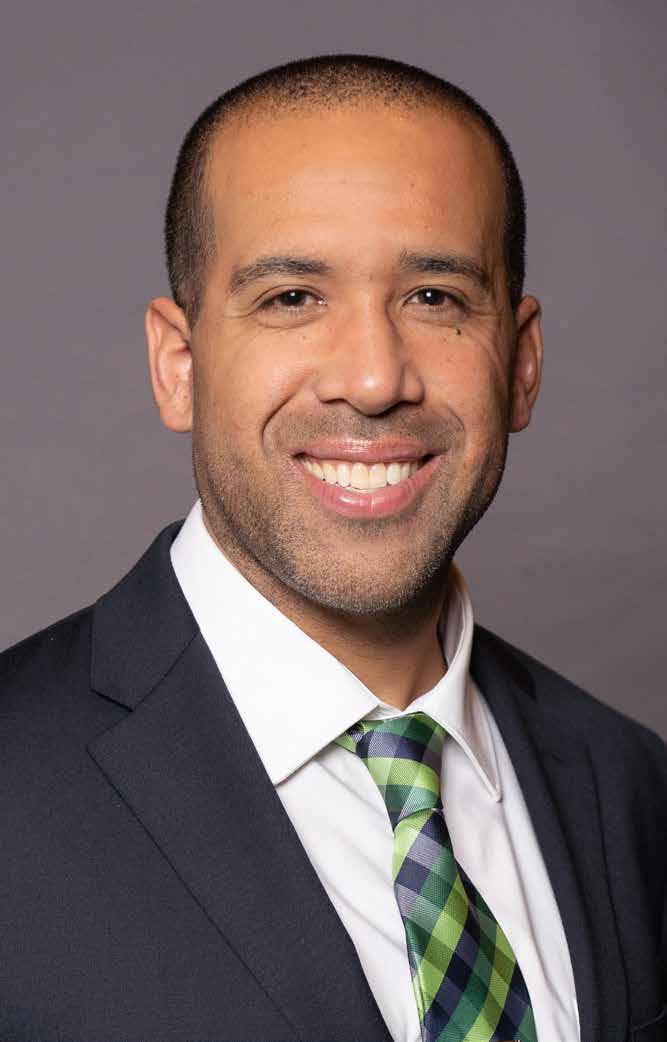
Many aspects of the medical sales industry changed because of the pandemic, and Midmark sales reps are no strangers to experiencing the ongoing impacts of COVID-19. Toney started his role with Midmark in December of 2018, with enough time to “get his feet wet” in his position before the industry came to a halt in early 2020 due to the pandemic.
“Very quickly, meetings turned to Zoom, Teams, and Webex, and the way sales reps interacted with customers changed dramatically,” said Toney. “Our sales team traditionally engaged our customers and prospects through impactful in-person demonstrations, collaborative workshops, and voiceof-customer exercises, so we had to adapt existing and new capabilities to meet our customers and distributors where, and how, they prefer to learn.”
In his role as a sales representative, Toney is given great autonomy to be able to take ownership of both his own daily and weekly responsibilities.
Midmark Corporate Headquarters is located in a quaint midwestern town in Ohio, characterized by its small-town authenticity and close-knit community. The
work that Toney does at Midmark in sales requires a substantial commitment, and “Midmark provides a valuable support system and creates an environment that goes beyond the professional realm to provide a sense of unity and collaboration among team members,” he said. Company-wide support assists sales reps in performing their best within the workplace.
For a sales rep, catering to a customer’s needs is the ultimate goal of an individual in the role. According to Toney, “Then, now, and moving forward – whether virtually, in-person or in a hybrid environment, medical sales reps must remain extremely effective in delivering value to customers despite industry changes.”
going to do.’ I had to build equity in a new industry, and I knew it was going to take repeated opportunities to go above and beyond to make sure customers and partners felt supported.”
New entrants seeking jobs in the healthcare industry have entered an entirely different market than their coworkers did just 10 years before. Remote work, changing healthcare demands from customers, the pandemic, and more, have altered many aspects of healthcare industry operations.
Thus, new entrants must change their sales tactics to stay ahead of competitors. Staying ahead for Toney means “starting my day with 30 minutes of reading on personal development,
“ Our customers are leaning on vendors to help navigate the disruption in the postCOVID era, and so it’s important for us to understand our customers’ challenges and deliver value by helping them solve their root cause problems.”
Staying ahead in sales post-COVID
Toney was led to a career at Midmark after his work experience as a local business owner. From there, Toney decided to explore opportunities beyond the local community, so that he could get a better experience of team culture, impact more people, and develop selling skills at a higher level.
“When I first started, my primary focus was to gain trust with our customers and distributor reps,” he said. “As simple as it sounds, my guiding philosophy was, ‘Do what you say you’re
sales, or psychology. I’m committed to writing down my daily plan to make sure the most important items are completed, or else they’ll be crowded out by emails and calls.”
There are many challenges that healthcare sales reps may face throughout a career, but what is important is how they choose to leverage those obstacles.
“Staff shortages, declining reimbursements, changes in payment models, and maintaining patient satisfaction are all ways the market has become more complex in recent years,” according
to Toney. “Our customers are leaning on vendors to help navigate the disruption in the postCOVID era, and so it’s important for us to understand our customers’ challenges and deliver value by helping them solve their root cause problems.”
Advice and collaboration is
key
For sales specific activities, Midmark has adopted a methodology called “The Challenger Sale,” in which guided workbooks and tools allow salespeople at the company to continually improve their tactics. Also, sales reps within the company can lean on one another by leveraging each other’s advice, or discussing selling experiences with other team members.
“It’s extremely helpful to seek advice, whether for territory sales strategies or tactically advancing specific sales opportunities. Having multiple mentors within the organization has been vital to my growth as a sales professional because of the perspective they can provide,” said Toney.
A mentor can help guide an emerging healthcare sales rep through the first few years of their career, until they are well versed in the industry and ready to start giving advice themselves.
As for advice for sales reps thinking about seeking employment in the industry, Toney says, “It’s important for today’s business professional to consider company culture, because corporate climate shapes how engaged and happy employees are, and this directly impacts workplace productivity and the overall success of the individual and organization.”
Joerns and MedPro: Better Care Through Better Service Line Coverage
In today’s continuum of care, the service line is migrating away from the traditional four walls of a hospital to alternate sites. As such, healthcare providers need the right products for safe handling of critically injured and chronically ill patients from expensive acute facilities (that may cost upwards of $3,795 a day) to the lowest cost alternate sites of care (that may cost only $395 a day) to continue their treatment.
Adding to the complexity, more and more of the U.S. healthcare patient population is moving out of urban settings and into rural areas and less dense suburban markets that typically lack access to the latest technology and services.
To solve this problem, Joerns Healthcare, a leading provider of medical equipment and services, and MedPro, an industry leader in contract sales for medical manufacturers, announced a partnership that promises a more equitable allocation of advanced care technologies in these underserved healthcare markets.
For Joerns, the partnership creates expanded reach into higher acuity sites of care while also accentuating “coast-to-coast” sales coverage through the MedPro team who call on accounts in markets of all shapes and sizes and have industry leading distributor relationships. MedPro sales professionals provide solutions for a wide range of customers, including acute care hospitals, surgery centers, alternate care

physicians, and ambulatory and long-term care facilities.
In turn, MedPro customers will have access to Joerns’ hallmark brands and cost-effective technologies, including its Hoyer® patient lift technology, Dolphin® advanced therapeutic support system and of course their patient beds. Joerns is well-known for best-in-class solutions for fall management and prevention, patient handling and mobility, and advanced wound care. Fall
management is a critical area for any healthcare facility that prioritizes the well-being of its patients and staff. Joerns bed frames and patient lifting devices create a suite of products and technologies that work seamlessly together to reduce the opportunities for falls and lessen the severity of a fall should one occur.
“We are excited about the power to simplify care through our partnership with MedPro,” said Doug Ferguson, Chief Marketing Officer for Joerns. “Joerns’ portfolio complemented by MedPro’s sales coverage provides compelling value with evidence-based solutions, delivered with operational simplicity, and in a fiscally friendly package for new sites of care through better service line coverage and support.”
“MedPro is very selective of the product lines that we represent. Joerns is a well-recognized brand – not only in the quality of their products, but also in their passion to improve patient care. We are thrilled for the opportunity to enhance our portfolio with their products and technologies that simplify care and improve the patient experience,” said Geri Lamano, Director of Medical Equipment Sales, MedPro.
For more information, visit joerns.com and mproassociates.com
Selling an Experience to Remember
How to use the customer experience to enhance your sales opportunities in 2024.
By Pete Mercer What are people going to remember most about your organization?
Is it the product you sell?
It might be special to you, but there’s a good chance that someone else has something that’s just as good (if not better.)
Is it the price point? That’s a big deal for a lot of people, but you might find that the right circumstances could keep customers around at a higher price point.
What about the experience?
Selling an experience that people will remember is a powerful way to ensure that you retain your customers, while helping you to build better relationships with new ones.
The customer experience is a critical part of the success of your organization – knowing what it is, how to use it, and

how to improve it. When you neglect the health and status of your customer experience, it will negatively impact your relationship with your customers and, ultimately, your bottom line.
Repertoire Magazine recently spoke with customer experience expert Dan Gingiss about what customer experience is and how businesses can provide a better experience going forward. Gingiss is the CEO (Chief Experience Officer) at The Experience Maker, an organization that is devoted to helping other businesses shape their sales and marketing tactics to create better experiences for their customers.
The future of the customer experience
Gingiss looks at customer experience as how the customer feels about every interaction they have with a brand – whether it’s something they get in the mail, a billboard they pass, or even visiting a physical location. He said, “Our overall customer experience is the collection of all those interactions. While customer service is one element of customer experience, it’s an element that we almost hope that we never have to use or experience because if the customer experience is perfect, then we never need customer service.”
Of course, there are no companies without a customer service department – no one is perfect. Even so, Gingiss said, “There is lots of data to support that customers who have had an issue that is resolved to be more loyal than customers that never had an issue in the first place. I think the reason for that is because when we spend our hard-earned money with organizations, we want to make sure that company has our back.”
Moving forward, organizations must be careful about using tools like artificial intelligence in interactions with customers. The biggest change from 2023 to 2024 in customer experience is the
impact of AI. “The real question is how do we use it for good and avoid trying to use it to eliminate human interaction, because so much of the customer experience is about the human interaction,” Gingiss said. An easy example to consider is the food service industry. When you walk into a fast-food spot, there’s someone standing behind the counter who is either smiling and happy to see you or seemingly irritated that you walked through the door. Human interactions, positive or negative, have a huge impact on how people feel about the whole brand, not just one location.
“Human interactions are always going to remain important. How does AI help supplement that and help the humans in the organization be better?”
The leaky bucket
Gingiss has this sort of central theory for when customers are leaving and not telling you why – the leaky bucket theory. This idea posits that businesses will go to great lengths to bring in new customers at the expense of their existing customers, often resulting in losing the existing customers. Shouldn’t the same effort that is being made to attract new customers be used to retain the current customers?


Essentially, these customers are leaving without telling you why. According to Gingiss, businesses should not be afraid of the kinds of customers that will leave complaints. “Complaints usually come from people who care. They care enough to complain. What they really want is for you to fix their problems so that they can continue to do business with you. If we don’t pay attention to that, then people will start to look for another option.”
Without seeing it happen, the leaky bucket can have a quick and devastating effect on your organization. Before you know it, the entire foundation that you have built with the customers over the years will be gone while you’re trying to court a new batch of customers. The important thing to understand is that those customers have helped you build your business – without them, your organization wouldn’t be where it is today.


Diagnosing the leaky bucket can be tricky, especially if your organization has put more focus on the new customers. Essentially, it comes down to identifying your retention rates, which is how many of your customers stay with you year after year, or month after month.
How to get the customer experience right
Clearly, the customer’s experience is a critical component to the success of your organization. It can be a delicate balancing act to get it right, but it is worth the investment of time and resources. It all comes down to understanding how important the customer journey is and what their experience is like when engaging with your team.
For Gingiss, the companies that are getting the customer experience right understand how important it is. “Customer experience is becoming the last true differentiator. It’s never a good idea to compete on price because it’s a race to the bottom. I think the ones that understand that then lean into experience and try to find little opportunities that make people feel appreciated and that they’re not being taken for granted – those are the things that stick with people.”
At the end of the day, you need to understand the challenges your customers are facing by seeing what they see. Ask yourself questions like: Does your team respond promptly to questions from your customers? If your team needs time to figure out the answer, are they following up with clear communications? Is your website easy to navigate? Do your products have clearly defined parameters and descriptions?
Once you start to ask yourself these kinds of questions, it will all start to fall into place. Gingiss said, “If you look at every business problem through the lens of the customer, you will make better business decisions. You will make decisions that make your company money, while also serving the customer. The ones that get customer experience wrong focus on revenue without paying attention to the customer.”
Understand their challenges
To better gauge what is keeping your customers up at night, ask yourself questions like:
` Does your team respond promptly to questions from your customers?
` If your team needs time to figure out the answer, are they following up with clear communications?
` Is your website easy to navigate?
` Do your products have clearly defined parameters and descriptions?
About Dan Gingiss: For 20+ years, Dan led teams in customer experience, marketing, and customer service. He learned by doing, whether it was building a customer-centric culture or developing the leadership skills to get the most of employees. He became known as an outside-the-box thinker and the boss that everyone wanted to work for.
Today, Dan combines his professional experience at brands like Discover, McDonald’s and Humana with tons of real-life examples from B2C and B2B companies of all sizes to recommend actionable, profitable CX solutions. To learn more, visit dangingiss.com











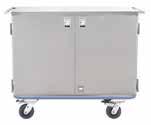



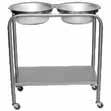




Communication Blunders
The top 10 communication mistakes medical salespeople make, and how to fix them.
By Brian Sullivan In the world of medical sales, your words are your currency. Spend them wisely, or you’ll find yourself broke in opportunities and relationships. After diving deep into the trenches of sales battles, I’ve identified the top 10 communication blunders that are costing you more than just a sale. Here’s how to turn those mistakes into closed deals and lasting partnerships.

No. 1: Talking More Than Listening
The biggest blunder? Thinking your voice needs to be the loudest in the room.
The Fix: Adopt the 70/30 rule. Listen 70% of the time, talk 30%. Your clients will tell you everything you need to close the deal if you just listen.
No. 2: Not Doing Your Homework
Walking into a meeting without knowing your client’s business, needs and pain points is like showing up to a gunfight with a knife.
The Fix: Research is your ammunition. Know their annual report even better than your sales script. (But don’t discount the importance of a script…that doesn’t sound scripted)
No. 3: Using Jargon Overload
You might think medical industry jargon makes you sound smart. Wrong. It makes you sound unapproachable.
The Fix: Speak human. The clearer your communication, the closer you are to a handshake.
No. 4: Failing to Follow Up
If follow-up is your weak spot, you’re leaving money on the table.
The Fix: Automate reminders or set a dedicated time daily for follow-ups. Personalize each one; a little effort goes a long way.
No. 5: Neglecting the Art of Asking Questions
Questions are the scalpel of sales; they dissect the prospect’s real needs and objections.
The Fix: Master open-ended questions. Each answer should lead you closer to the core of what the prospect truly desires.
No. 6: One-Size-Fits-All Pitching
Your product features and benefits aren’t a magical remedy, and your pitch shouldn’t be either.
The Fix: Tailor your pitch. Customize your message based on your research and the feedback you receive while listening (see Mistake No. 1).
No. 7: Ignoring Buying Signals
Sometimes the sale is screaming to be closed, but you’re too busy selling to hear it.
The Fix: Learn to recognize buying signals. Adjust your pitch to start closing the moment you hear them. Trust your instincts earlier.
No. 8: Underestimating the Power of Storytelling
Facts tell, but stories sell. Drowning your prospects in data and neglecting to connect on an emotional level is a fatal error.
The Fix: Incorporate relatable success stories of how your product/service solved a similar client’s problem.
No. 9: Lacking Enthusiasm
If you’re not excited about what you’re selling, why should your prospect be?
The Fix: Genuine passion is infectious. Believe in your product, and your excitement will naturally influence your prospects.
No. 10: Forgetting the Follow-Through
Closing the sale isn’t the end; it’s the beginning of a relationship. The Fix: Deliver on every promise made during the sales process. Exceed expectations. A delighted customer is your best advocate.
Implementing the Fixes
Now that you’re aware of these pitfalls, it’s time to act. But how?
1. Practice Active Listening: Engage in conversations outside of sales to hone your listening skills. The more you practice, the better you’ll get.
2. Stay Curious: Make research a habit, not a chore. The more you know, the more you can connect and tailor your solutions to your clients’ needs.
3. Simplify Your Language: Challenge yourself to explain your product or service in the simplest terms possible. If your grandma gets it, you’re on the right track.
4. Create a Follow-Up System: Whether it’s a CRM tool or a simple spreadsheet, find a system that works for you and stick to it.
5. Craft Better Questions: Spend time crafting questions that probe deeper into your client’s business. Remember, the quality of your questions determines the quality of your results.
6. Personalize Your Approach: Use the information you’ve gathered to create a pitch that addresses the specific needs and pain points of your client.
7. Study the Close: Pay attention to the signals that indicate readiness to buy. Adjust your approach to gently guide the prospect toward making a decision.
8. Tell a Story: Collect stories from happy customers and share them. Make your product the hero of a journey that ends in success.
9. Reignite Your Passion: Reconnect with what made you believe in your product in the first place. Share that belief.
10. Exceed Expectations: Always look for ways to add value after the sale. Surprise and delight your customers at every opportunity.
Final thoughts
In medical sales, your success hinges on your ability to communicate effectively. By avoiding these common mistakes and applying the fixes, you’ll not only see an improvement in your sales numbers but also in the quality of your business relationships/friendships. Remember, in the end, people buy from people. Be the person they want to buy from.
Brian Sullivan, CSP, is the founder of PRECISE Selling and a leading voice in the field of medical sales training and development. He believes in the potential of every salesperson to achieve their best and continually challenges sales professionals to reach new heights. To have Brian Sullivan or one of his stable of trainers and coaches help your team get to the top, visit him at www. preciseselling.com
Learning to Love Rejection
If you persevere through rejection, your audience (and success) will emerge.
By Kevin Brown“I really wish I was less of a thinking man and more of a fool not afraid of rejection.” — Billy Joel
I am a keynote speaker and author. I am a sales professional. I am a human.
I have an intimate relationship with rejection.
Growing up I was a sensitive kid. I wanted everyone to like me. Even when I played Little League baseball. I wanted the other team to like me. The umpires too. If I was called out, I took it personally.
My dad, an old sailor, used to tell me I needed to have thicker skin.
He would say, “Toughen up, kid. If everyone likes you, you’re playing it safe. Stop hitting singles and start swinging for the fences.”
The older I get the smarter my father is. He was right. Not everyone is going to like you.
Playing it safe is not a great strategy. Playing it safe is choosing to be ordinary. We weren’t created for that.
I was listening to my friend Dan Clark the other day. Dan is a hall-of-fame speaker, author, and singer/songwriter. He was talking about selling a million records. Going platinum.
He said, “There are 300 million people in this country. You can piss off 299 million of them and still have a platinum record.”
What a great perspective.

More people are going to reject your ideas than accept them. More people will ignore you than acknowledge you. Most people won’t give one thought about what you did, said, sang, or wrote.
So what?
Who cares?
Your truth, your voice, your ideas, and your contributions weren’t for them. You sing your song. You write your book. You paint your masterpiece.
Your audience will emerge. They will tune into your frequency. They will buy what you’re selling. You don’t need to win them all. Just the ones you are here for.
Stop playing it safe. Step up to the plate and swing for the fences. Not everyone will cheer as you’re rounding third, headed for home.
But the ones who matter will.
Here are three things to focus on when it comes to handling rejection.
1. Ignore it: Who cares if someone doesn’t like you or want what you’re selling? Their loss. As we say in sales, NEXT! Time to move on.
2. Be True to You: Far too many people play it safe and live their lives by comparing themselves to others. They look for what’s popular and try to fit themselves into it. The great ones blaze their own trail and go where others cannot even see a path.
3. It’s a Numbers Game: Every rejection, every closed door, every no, gets you one step closer to victory.
Most people quit when they are on the doorstep of their greatest breakthrough. Put your head down and keep striding toward home. You are almost there.



Successful Sales Leaders are Exceptional Followers
How you listen and treat your customers matters just as much as what they say during a sales conversation.
By Patrick T. Malone For decades, experts have said that leadership is intangible and therefore un-measurable. But if you look at any great leader, you see that leadership is clearly measurable. Leaders are determined by their followers. No committed customers. No sales leadership.
In business, leadership occurs at all levels – from the executive suite to the shop floor – and at every level in between. Influential leaders, no matter what title they have or role they play, are those with willing followers.
Leadership is merely getting wholehearted followers for a given course of action. Unfortunately,
too many salespeople ignore followership and focus instead on being more engaging, convincing, or interesting. Or, sometimes, they even rely on their positional power
and end up, not with committed customers, but with agreements at best, compliance at worst, and marginal business results.
Most successful sales leaders prepare for their interactions by establishing a common goal. Leaders understand the difference between goals and strategies. Goals are always outcomeoriented, starting with the end in mind. Strategies are the plan a leader has for reaching a goal.
The next step involves the conversation the leader has with a potential customer. Leaders express the common goal which includes three critical elements:
1. A confident statement of the goal which has value or benefit to the potential customer
2. An invitation for the customer to look at or listen to the goal and strategy
3. An acknowledgement that the potential customer is the decision-maker.
By stating confidence when the leader puts forth an idea for others to decide on and treating the potential customer as the decision maker, the leader has a greater chance to create an open mind and gain credibility.
Not everyone sees the same information the same way. Because emotions shape logic, the way we look at information is different if we are fearful than if we are interested.
Where to start
Opening conversations with a wellstated decision goal establishes
rapport, openness, and trust. Also, this lets the potential customer know they are the decision maker, so they feel safer talking and revealing their true attitudes toward a plan.
A customer’s potential attitude is either positive, negative, or neutral. However, because attitudes are situational, they can change moment-to-moment. So, when we talk about attitudes, we mean attitudes in the moment. Exceptional sales leaders intuitively recognize momentary changes in attitudes or points of view in a conversation. They focus more on how something is said, and then, what is said makes more sense.
the plan as risky, you mitigate or eliminate the risk. If a customer is skeptical, provide proof. Because customers demonstrate a variety of different attitudes, you need a range of responses that make sense to each potential follower. The key to finding the right response is to have customers share their points of view and how they see a situation. As a result, sales leaders know from the customer’s perceptive what is difficult, risky, or unbelievable.
Regardless of a potential customer’s response, you must treat them with respect, so they talk openly and seriously consider the goals and strategies. This is where acknowledging is critical.
Leaders understand the difference between goals and strategies. Goals are always outcome-oriented, starting with the end in mind. Strategies are the plan a leader has for reaching a goal.
Recognizing and adapting is what enables sales leaders to influence others. For example, when you give someone directions to your home or office, you first determine the other person’s location or starting point. The directions you then give vary based on where the other person is at that moment in time. The same is true for leadership interactions.
If a potential customer considers the goal and strategy difficult to execute, then you must simplify both. If a customer sees
Respecting another person’s point of view and taking that person seriously is not difficult if you will remember you are not saying their point of view is correct but only acknowledging that they have a right to that point of view at this moment in time.
Clearly the ability to obtain a committed customer for a given course of action involves more than we have articulated here. However, understanding that successful leaders are great followers first will assist you in becoming a better, more effective leader.
How to Leverage Strategic Thinking for Your Organization
Leadership and sales advice from The Cure Podcast
By Pete Mercer Strategic thinking is a critical tool for sales leaders. In a recent episode of The Cure Podcast, hosts Scott Adams and Brian Sullivan spoke to Colonel Kevin Benson – a retired professional soldier with a distinguished 30-year career in the United States Army – about the world of strategic thinking and leadership excellence. In addition to his military career, Benson is a graduate of West Point Military Academy, a contributor to prestigious journals, has a Ph.D. in American history, and is the author of the upcoming book, “Expectation of Valor.”

Here are some highlights from their conversation.
Choosing a leadership style
Picking the right leadership style can be the deciding factor on whether people are going to follow you or not. In this conversation, Sullivan brings up two people who can be distilled into their contrasting styles of leadership: famed football coach Tony Dungy and famed basketball coach Bobby Knight.
Famously, Bobby Knight was known for his antics on the court. Screaming and threatening
his players from the sidelines, he drove his teams to win over 900 basketball games, including three NCAA championships.
Tony Dungy, who led the Indianapolis Colts to the Super Bowl, is known for focusing on his personal values and the positive impact he can make.
Both leadership styles have their place, but it’s important to understand how each approach can be used successfully. While the Tony Dungy approach is likely to be most effective in any situation, Benson notes that the Bobby
Knight approach can work too. You just have to be able to back it up with your own actions.
Benson said, “There are leaders so toxic that it doesn’t matter how competent they are; they are jerks and people won’t follow them. The Bobby Knight style of leadership can be remarkably successful because people will follow him if he’s demonstrated his competence. It’s the classic situation where you don’t tell someone to do something that you’re not capable of doing yourself.”
Building a team
Every good leader is responsible for building a strong team equipped to hit goals and achieve company outcomes. This is one of the more challenging aspects of leadership because the way that you build your team will play out in the results your team provides.
Benson said, “You need to recognize your frame and what influences the way you think – while your frame enhances your ability, the nature of a frame also prevents you from seeing things that others who have a different frame than you might be able to see. Therefore, the total product of the team brings in more nuance.”
By focusing on the nuance that different people from different backgrounds can bring to the team, you can foster an environment that allows for everyone to share their perspectives and ideas. Leaders need to be able to recognize the limits of their own intelligence and accept the input from those around them – which is why it’s critical to build your team well.
For the latest episodes and interviews, subscribe to “The Cure with Scotty and Sully” on iTunes or YouTube.
Mobile Adjustable Height Lead Acrylic Window Barrier

With the same great protec tion you get from a Wolf barrier, this model features the ability to position the clear lead at any level between 45.25” and 74” for the ultimate in patient and operational visibility I t ’s great for dozens of applications.
Best of all, the internal counter balance mechanism makes it easy to lif t or lower…it requires minimal
• O verall width: 30.5”
• Opaque por tion of the shield has .8mm lead equivalent protec tion
• Clear panel provides .5mm lead equivalent protec tion
• 25” legs with casters provide strength, durability and easy transpor t within the clinic
• The per fec t right size solution for any environment: OR, ER, C T, X-ray, Urology, Pain Management, and Surgical Centers
• When lowered allows rapid transpor t to any location in hospital or clinic and easy-to -store






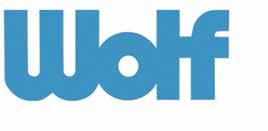

The State of Distribution
A conversation on where we’ve been, where we are, and where we’re going as an industry.
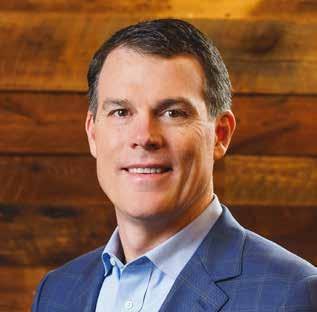
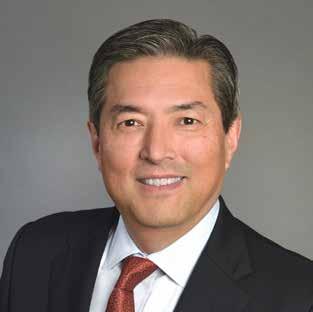
Editor’s note: In a recent podcast, Repertoire Publisher
Scott Adams hosted Brad Hilton, the 2024 HIDA Chairman of the Board and Matt Rowan, the president and CEO of HIDA, to discuss the state of the industry post-pandemic, legislative issues to watch, and more. The following are excerpts from their conversation.
Scott Adams: Brad, tell us a little bit about your dad (Herb Hilton) and his legacy. He spent well over 30 years working in the industry and with HIDA specifically. What did you learn from him as to the importance of working with the association and peers within the industry?
Brad Hilton: My dad talked about HIDA and his peers all the time. Some of the things that stick out were, first, the lifelong friendships he made. Second, I think the work was enjoyable for my dad. There was the business side of it, but there was a lot of pleasure and social enjoyment to it. Back in his day, there weren’t big national companies. They were mostly small, local businesses. He would often
say, “It kind of gets lonely in your own market. You are in your own little echo chamber.” So, HIDA was a chance to pull out of the daily grind and look more holistically at the business and the industry, share different ideas with peers and learn from them. It really gave him an opportunity to get a fresh, different perspective on his business. He always valued that.
Another thing he used to talk about was that as big as the industry is, it’s really small. He told us, “Don’t burn any bridges. You never know who your boss is going to be. You never know who your competitors are going to be, who your suppliers are going to be, or your customers. It is amazing how much people move around, but they don’t move very far.” He told us we would build lifelong connections and friendships, and to not miss that. Now, for me coming up on my 30th year, it’s shocking to see how true all of that still is.
at our recent MedSupplyChain Conference in February, and our Pandemic Preparedness Conference held in DC in June of each year, we want to maintain those high levels of engagement between leaders in government and the private sector.
Back to your point about relationships, they matter between industry and government equally. Why do we build those relationships? Really, it’s the same reason you build commercial relationships. We want to build a relationship with the government so that we can perform at a high level, especially in the middle of a crisis. And we want to be able to innovate.
Project Airbridge was a great example of that. It was a tremendous success. It was developed at the height of the pandemic and was a success on its own. It really showed the government that they have a true partner in distribution.
Early in the pandemic, distributors shared an unprecedented amount of very sensitive information, but they did so willingly and forged a trusted relationship with the government. The quid pro quo was that the government had the data and information they needed to make sound decisions during a very critical time.
Adams: As big as the industry is and as consolidated as it’s gotten, relationships still matter. I think Matt’s organization helps to bridge those relationships and keep people coming back together. Relationships still drive this business, as much as we think it’s IT or anything else.
During the pandemic, the amount of communication and collaboration within the industry was just unbelievable. I think about Project Airbridge and how McKesson, Cardinal, Owens & Minor, Henry Schein and on and on all worked together to help get products to the end users that were in need.
Matt, what are some of the things you’ve seen collaboratively in the industry post-pandemic, and where are you helping to work with distributors and manufacturers to foster more of that?
Matt Rowan: The collaboration between industry and government was strong during the pandemic, and has only gotten stronger since. We’re all committed equally to what we learned during COVID, to have solutions and plans in place for any future disruptions that we have or might encounter. For example,
But the other part is that today’s innovation is tomorrow’s tool. So fast forward a couple of years to when baby formula was in short supply. What was one of the first things the government did? They flew additional supplies over from Europe. Project Airbridge was a trailblazer and an innovator in that way.
The other big piece is the Supply Chain Control Tower. Early in the pandemic, distributors shared an unprecedented amount of very sensitive information, but they did so willingly and forged a trusted relationship with the government. The quid pro quo was that the government had the data and information they needed to make sound decisions during a very critical time. So, as rocky as it might’ve been, it might’ve been even rockier if the government didn’t have the confidence in the data and their situational awareness in real time, which they did. So, at the end of the day, we want distributors and manufacturers to be seen as subject matter experts and partners that the government can rely on.
Hilton: As Matt mentioned, at the MedSupplyChain Conference we had a planning session, and around



the room were suppliers, distributors, and providers. You had state and local healthcare providers, and folks that were responsible for their counties. You had tech and government leaders. All of us were in the same room talking about what we needed, and what our goals looked like.
As you know, this is complicated. These issues aren’t getting solved in five minutes, and there is no silver bullet. But all of us in the room asked, “What is it that you’re looking for? What does it look like for you?” and then collaborated and tried to figure out the best way to advance. It’s not simple, but having the forum to have those discussions gets the relationships right. Whatever happens or doesn’t happen, you’ve got the trust and the partnerships to try to mitigate or minimize the impact.
Adams: What are some of the biggest challenges you are hearing in the industry that are going to face the med/surg specific community?
Hilton: We could go in a lot of different directions with this question. I’m sure Matt has some stuff to add. One of my mentors once told me, “Never forget to see how your customer gets paid.” So, how does your customer get paid? What is their financial health?
There’s a lot of discussion around U.S.-made vs. global sources, vs. China, etc. We’ve always advocated for an all-of-the-above approach.
Our customers are under a tremendous amount of pressure right now. Some of it is because of inflation. Everything is more expensive. We say inflation is starting to come down a little bit, but prices aren’t coming down – they’re just not going up as fast as they were. Because of inflation and the tight labor market, customers are saying during business reviews that they’re having to limit their hours. It’s not that there are no patients to see. They have to limit the number of hours, because they can’t stay staffed long enough to actually see all the patients that have a need. And if you don’t believe that, try to get in with a specialist. They’ll tell you they can see you in six or eight months.
Our customers’ reimbursement is not going up. They’re not getting more margin for their services, and yet, all their costs are going up, and their labor is harder and harder to maintain. In many of these offices, they’ve got investors looking back at the COVID days wondering, “How do we get back there?” So, I think they’re under a lot of duress.
Adams: Matt, you have a perspective that neither Brad nor I do, because you get to see it from every angle daily with all of your members.
Rowan: Yeah, it’s interesting. As Brad said, in a lot of ways, the pandemic itself, the disease, is behind us, but the residual impact on the supply chain remains. If you look at certain categories, inventories are elevated, and they’re in an oversupply situation. But in other categories, we have back orders that are popping up randomly across the product portfolio.
The biggest challenge for distributors and manufacturers is, how do you provide value and solutions in the face of these continued disruptions, when economics for providers and patients are so tight from inflation and other factors? The number everybody is looking at right now is patient volume through these different settings of care. When are patients going to return? A lot of things have bounced back since COVID, but that last bit of patient volume hasn’t consistently come back in each of those major sites of care yet.
Adams: Matt, this one’s for you specifically. Talk about some of the key things HIDA is working on legislatively. I know the industry is interested in that. Rowan: We’re looking at everything we do with the government, whether it’s Congress, regulatory agencies, or the White House. We want to make sure that, at the end of the day, they know the value that distributors and manufacturers bring to the table, and what unique value they provide during an emergency. We want to position our members as subject matter experts in the policy-making discussion so that results in sound policy that will be effective when we need it the most, particularly with emergency response.
There are two areas I would point out. The first is our FAST PASS legislation. This is legislation that’s going to speed and expedite medical products through ports and transportation systems during a healthcare emergency. It worked a little bit during the pandemic, just based on a cobbled together situation.


But I think, looking forward, we need something that really has the potential to alleviate and be a part of the solution should (or when) we encounter another disruption the level of COVID.
The second part is advocating for an all-of-theabove approach. There’s a lot of discussion around U.S.-made vs. global sources, vs. China, etc. We’ve always advocated for an all-of-the-above approach. How do we link the strengths of all the sites of manufacture in a way that results in the most resilience, and the most prepared supply chain we can have for our country? The place where a lot of that focus is on domestic manufacturing or North American manufacturing, so we’re spending a lot of time on that with the government. Even last week, we did some focus groups for them on what does industry need to make for a sustainable industrial base in this country of key medical supplies?
self-regulation is really important for an industry. Industries that don’t do a good job of governing themselves welcome regulators, and regulators love to regulate. Normally, good intentions go too far. It’s really in our best interest to put our best foot forward, work together, and collaborate the right ways to do the right thing by our great country. If not, we’re going to encourage people to come in and make our lives difficult. Good intentions will probably go bad, and lead to great inefficiency, frustration, headache, hurdles, etc. So, I think that’s an important part.
Something a little bit more enjoyable to talk about is how can we as an industry attract new talent? How do we attract new talent, where kids in college say, “I want to be in healthcare distribution”? The HIDA team quickly took that recommendation and ran with it. We sponsored 11 students to come to
Normally, good intentions go too far. It’s really in our best interest to put our best foot forward, work together, and collaborate the right ways to do the right thing by our great country. If not, we’re going to encourage people to come in and make our lives difficult.
We also have our pandemic preparedness conference in DC each year, where we bring leaders together to collaborate on things like the critical product list. At the conference we ask, “What are you going to stockpile? How much of it are you going to stockpile?” There is a communications protocol that our team has done with them so we stay aligned. How do we stay aligned just in communication between government and industry in any future pandemic? We’re going to release a resilient roadmap, which is a set of policy recommendations for the industry as a whole and government as well. Overall, we are trying to inject the industry’s thinking and expertise into the policymaking apparatus in DC across all the agencies, the White House, and Congress.
Adams: Brad, in your 1-year term as HIDA Chair, what are you most excited about working with Matt and his team?
Hilton: Two things jump out at me. One is kind of boring, but important – supply chain resiliency and working with our government partners, I think
the MedSupplyChain Conference. These were college students, juniors, seniors, from around the country, that spent time with the government leaders, distributors and suppliers on hand. It was really cool to see where they got exposed to things that they never would have seen. So, how do we think about the next generation of talent? And how can we be a little bit more proactive, rather than reactive, on hoping that talent is in the industry?
Rowan: Having the students attend the MedSupplyChain Conference was really refreshing. They engaged with everybody. Some of them were fearless. At Q&A time, they would grab the mic and ask a few questions, and the questions were spot on. It was just a wonderful experience. We had Brad, Lisa Hohman from Concordance, and Paul Farnin and Pete Bennett from Cardinal do a one-on-one session with the students for an hour. So I think the workforce is a big part of it, and I think diversity is a part of the workforce. We had some HBCUs represented there, as well as some big national universities. All of it was great to see and something we will build on.

See what’s possible

Distributors and self-distributing health systems now have complete transparency of their Dukal products’ from purchase order to delivery.
Product Assigned at the Factory Level
Product Tracking at the Item Level
Compatible Excel Reporting
Automated Communication
Worldwide Tracking


Patients with Disabilities: An Unmet Need
Physicians may be technically ADA-compliant, but that doesn’t mean they are meeting the needs of their patients with disabilities.
 The law says that providers must ensure full and equal access to their healthcare services and facilities. Federal civil rights laws such as Section 504 of the Rehabilitation Act of 1973, the Americans with Disabilities Act of 1990 and the ADA Amendments Act of 2008, as well as the 2010 Patient Protection and Affordable Care Act, prohibit discrimination against Americans with disabilities. But the letter of the law isn’t enough.

“Physicians may be technically ADA-compliant, but that doesn’t mean they are meeting the needs of their patients [with disabilities],” says Carolyn Foster, M.D., MS, assistant professor of advanced general pediatrics and primary care at Northwestern University Feinberg School of Medicine. “The ADA is an incredible law; it is civil rights legislation for people with disabilities, and with it comes specific regulations around space and equipment. But depending on the person’s individual disability and needs, this may not be sufficient.”
What is a disability?
According to the Centers for Disease Control and Prevention, a disability is any condition of the body or mind that makes it more difficult for a person to do certain activities and interact with the world around them. Overall, there are about 42.5 million Americans with disabilities, making up 13% of the civilian noninstitutionalized population, according to U.S. Census Bureau data from 2021.
“There are multiple models of disability – the medical model, social model and neurodiversity models among them,” says

Clarissa Kripke, M.D., AAFP, clinical professor of family and community medicine at the UCSF School of Medicine. “Each has a place and time. The key is to use the right model for the right situation.” Dr. Kripke directs the Office of Developmental Primary Care at UCSF, a program dedicated to improving outcomes for people with developmental disabilities across the lifespan with an emphasis on adolescents and adults.
“The medical model is at its best when someone was “normal” to begin with, meaning their traits and characteristics fit into the statistical norm on a bell curve,” she says. “Then something happens – they get sick or hurt – and we have a pill or procedure to restore them to normal. For example, if someone has normal vision and develops a cataract, we can restore their vision by doing a simple surgery. If someone falls and breaks their leg, we can take them to surgery and they can walk again.
“The social model is very useful when the goal isn’t to change a person’s function, but to enable them to participate by improving adaptive equipment or the environment. For example, suppose I want to be a doctor and I have a mobility disorder. If my medical school welcomes people with disabilities, holds classes in a room with a wheelchair ramp and provides a lift transport to rotations, I can meet all the requirements of my training. However, if my school decides that doctors who use wheelchairs are unfit, or creates barriers for me and other disabled staff and patients, such as heavy doors, stairs, or exam tables and scales we can’t use, I wouldn’t be able to become a doctor.”
A third model – the neurodiversity model – “is an acceptance model that focuses on what people are good at and on their gifts and interests rather than their limitations. [T]he goal is to help the person maximize their potential and make their best contribution by focusing on their strengths and what they can contribute rather than solely on what resources or accommodations they need. For example, Stephen Hawking both needed total assistance for all his basic activities of daily living and made profound contributions to understanding the universe.”
physical and communication accommodations; knowledge, experience, and skills; structural barriers; and attitudes toward people with disabilities, according to a 2022 article in Health Affairs titled “I Am Not The Doctor For You: Attitudes About Caring for People With Disabilities.”
In a study, physicians repeatedly raised the issue of limited time with patients as a barrier to providing high-quality care to people with disabilities, according to the authors. “A rural-practicing primary care physician said, ‘It’s hard to individualize what you need to do and make sure
‘ There is more awareness in the general population about the contributions that people with disabilities make, and that has translated into more awareness in the medical profession.’
The good news, says Dr. Kripke, is that “there is more awareness in the general population about neurodiversity and the contributions that people with disabilities make, and that has translated into more awareness in the medical profession. That is especially true among younger doctors who had the benefit of going to school with people with disabilities, and with the assumptions that disability is part of the human experience, a valued part of human diversity, and that reasonable accommodations and inclusion are required by law.”
Barriers for patients
Barriers exist in many physician offices today, including insufficient
they understand, and take care of their needs, in a 15-minute appointment.’” One specialist told the researchers that people with disabilities are “a disruption to clinic flow.”
The physicians in the study also raised concerns about scheduling and the ability to document the need for accommodations in the electronic health record, and difficulty coordinating care with families of people with disabilities, particularly when family members were not local or were unable to attend appointments. “Physicians frequently stated that their clinical settings failed to provide adequate expertise or administrative support needed to care for people with disabilities.”
Authors of a study in BMJ Open studied self-reported barriers to primary care access by autistic adults compared with non-autistic adults. They found that the following circumstances did lead to adverse outcomes:
` Difficulty using the telephone to book an appointment.
` Challenges with the waiting room environment.
` Difficulty planning an appointment in advance.
` Needing a support person to attend appointments.
` Not feeling understood.
` The inability to see a known or preferred doctor.
` Waiting to see a doctor.
Much of the deficits in communication stem from the delay in the patient’s onset of speech, poor understanding of the words being spoken to them, and the inability to use speech appropriately in social situations, which can lead to failure answering questions or using an improper tone of voice, wrote pediatrics researchers in a 2019 article in Frontiers in Pediatrics.
“In addition, children with ASD [Autism Spectrum Disorder] often have difficulty interpreting sounds or visual information, which may lead to a decrease or lack of response to normal social cues, further hindering the formation of relationships with others,” they wrote. “These children typically have a difficult time adjusting to new surroundings and stimuli, often favoring their everyday, predictable routines. Even with these common characteristics, managing children with ASD, particularly when they are ill, can be difficult, as no two children present the same way.”
One platform — three simple tests
Ease of use
P 3 simple steps:
swirl and see*
P Less than 1 minute of hands-on time
P No drops to measure
P
all-in-one collection and test


A new approach
Physicians can’t control all these factors, but they can control and modify their approach and attitude toward patients with disabilities. And some are doing just that.
Doctors in medicine have some of the worst aspects of ableism, says Dr. Foster, referring to what has been defined as discrimination of and social prejudice against people with disabilities. “In medicine we are taught to be corrective. We see disability as something to be fixed, rather than focusing on function.
“One of our jobs as physicians is to assess not only developmental disability, but also health literacy,” she says. “My approach is, ‘Tell me your understanding of your condition and your understanding of what I’m asking you to do for your health.’ If there is a deficit, I work with the patient and family to fill it. Physicians should be doing this anyway. But this is where ableism may come in. Some doctors make assumptions, like, ‘This person can’t do what I’m asking.’ But we shouldn’t assume people with a disability can’t participate in their own healthcare.”
“The medical profession has a long way to go to improve clinical skills to better serve patients with intellectual, cognitive, psychiatric and physical disabilities,’ says Dr. Kripke. “Unfortunately, very few medical schools offer training in care of people with disabilities. This will improve as we develop more training and admit more health professionals with disabilities into clinical training. It will also improve as we include people with disabilities in communitybased research programs where people with disabilities work with

academics to conduct research that is relevant to the community. Patient advisory councils can help medical centers and practices understand the user experience of being a patient.”
Medical schools are attempting to address the gaps in medical education regarding how to serve patients with intellectual and developmental disabilities. For example, on their two-week elective rotation, medical students at UCSF teach a class on a health topic to people with I/DD, says
Dr. Kripke. This helps people with I/DD learn about health, while health providers learn to partner effectively and communicate with people with complex disabilities. In Ohio, The Ohio State University College of Medicine offers training on I/DD that includes interacting with community volunteers, home visits and assignments to disability-related sites in the community.
“The practice of medicine changes slowly,” says Dr. Kripke. “Far more work is required.”
Parkinson’s Disease
April is Parkinson’s Disease Awareness Month, in observance of those living with the degenerative neurological disorder.
60 years
Most people diagnosed with PD are age 60 years or older, but an estimated five to 10 percent of people with PD are diagnosed before the age of 50, according to a National Institutes of Health report titled “Parkinson’s Disease: Challenges, Progress, and Promise.”
8.5 million
The World Health Organization estimates that there were approximately 8.5 million individuals with Parkinson’s Disease throughout the world. The prevalence for PD has also doubled globally over the past 25 years. There is currently no cure for PD, according to the WHO; however, there are currently therapies, medicines, surgeries, and rehabilitation on the market that are able reduce a patient’s symptoms.
2022-2031
In May of 2022, the World Health Assembly endorsed the Intersectoral Global Action Plan on Neurological Disorders for 2022-2031. The plan aims to address care gaps and services for people with neurological disorders including Parkinson’s Disease. The action items include policy prioritization, timely diagnosis, improved treatment and care for individuals, and fostering increased research on neurological disorders.
2nd
Parkinson’s Disease is the second-most common neurodegenerative disorder in the United States, after Alzheimer’s disease. Symptoms often exhibit in patients slowly at first, with tremors and then onto increasing stiffness and slowing of movement, according to Mayo Clinic. PD symptoms often worsen over time as the condition progresses.
1.2 million
Nearly 1 million people in the U.S. are currently living with Parkinson’s Disease (PD), according to The Parkinson’s Foundation. The number of people living with PD is expected to rise to 1.2 million by 2030. Parkinson’s Disease is a progressive neurological disorder affecting the nervous system and parts of the body controlled by nerves, according to Mayo Clinic.
90,000
A 2022 Parkinson’s Foundation study found that nearly 90,000 people are diagnosed with Parkinson’s disease every year. This statistic highlights a significant increase from the previously estimated rate of 60,000 diagnoses annually. Increased incidence of PD nationally aligns with the growth of the aging U.S. population.
$14 billion
In the United States, the cost of treating PD is estimated to be $14 billion annually, according to the NIH, and as the population ages, care costs are expected to drastically increase. The number of people diagnosed with PD is expected to double by 2040, per the NIH. Researchers have been continuing to develop treatment options that have improved some of the motor skill symptoms associated with the disease.

The Long Game
Banner Health’s Doug Bowen has been a lifelong student of supply chain and created a lasting legacy that’s benefited both his organization and the industry at large.
Editor’s note: The following article originally appeared in the January/February 2024 issue of The Journal of Healthcare Contracting, a sister publication of Repertoire.
 Never underestimate the power of a compliment.
Doug Bowen began his career in 1985, working at a local hospital while attending college. A few months into the job, he was restocking supplies for the emergency room when a physician ran in. The physician was obviously in a rush and asked Bowen for a certain product. Bowen was able to find the product and put it in the ER physician’s hand. Bowen will never forget what
happened next. The physician looked him in the eye and said, “Strong Work!”
Bowen decided then and there that he wanted to care for our nation’s caregivers
through a career in supply chain. “Mark Twain said he could live for two months on a good compliment,” he said, “but I tell everybody I made an entire career out of a good compliment.”
The U.S. healthcare supply chain is always changing. There are new products that come along, new processes, software, and systems. Bowen has never had a day of work where he was bored or disengaged. “It’s always been challenging and there has always been something new for me to learn.” He once had a boss who told him that his operations and department would never get better until he got better. “So, from that day on, I’ve always thought that I need to be a lifelong student of supply chain and really try to learn all I can to be as good as I can, so that we can have improved operating results for the department.”
Bowen, now senior vice president of supply chain services and chief supply chain officer at Banner Health, is used to working at what he calls “the long game.” He is this year’s JHC Contracting Professional of the Year.
Pivotal moments
Bowen’s first supply chain job (then known as Materials Management) was at a local HCA hospital, stocking shelves while attending school in Utah. After finishing college and grad school, he stayed in supply chain working with HCA and HealthTrust (which spun off from HCA).
Bowen relocated to Nashville (HCA’s headquarters) in 1991 to become a business analyst for the supply chain system. A few years later, he became manager of supply chain systems and led a team
that designed HCA’s automated Supply Management and Resource Tracking (SMART) system.
While at HCA Information Services, he worked with David Welch, Ed Jones, and others to create a strategy for the future supply chain at HCA. The resulting strategy could be summarized by one word, “disintermediation,” the removal of intermediaries in the supply chain or “cutting out the middlemen,” he said.
Bowen took the position of supply chain officer for the HCA North Texas Division to implement the disintermediation strategy: to buy direct from manufacturers, eliminate distributors, and provide internal distribution from a Consolidated Service Center (CSC).
HCA implemented the strategy in 11 different markets around the country. Bowen led the efforts in Dallas for the HCA North Texas division by creating a consolidated service center. The CSC had centralized distribution, procurement, and accounts payable all out of one building. “It was an opportunity to show that you could take the individual hospitals and migrate them to a centralized high performing service center and be successful.”
Banner Health’s 20-year plan
In 2002, Bowen moved to Phoenix as the VP of Supply Chain for Banner Health. He immediately went to work to implement the same CSC strategy at Banner Health.
“ The reason we wanted to get into this business was to control all the raw materials. We control everything that goes into our surgical packs and we’re able to make changes on the fly as things happen with recalls. We were able to control all the components, and we’ve been able to keep our costs flat.”
“In the early ’90s, just about everybody was buying from distributors,” Bowen said. “The strategy from HCA was to do their own internal distribution and buy directly from the manufacturers so that they could take advantage of those relationships. The money that we were spending with those manufacturers would be a direct discussion, as opposed to having somebody that might take advantage of what’s going on in the middle.”
Upon interviewing for the position, he came away impressed with the organization’s leadership. Longtime CEO Peter Fine spoke Bowen’s language with an emphasis on being data driven, disciplined in cost controls, and results oriented. But it was during Bowen’s first meeting with Ron Bunnell that he got the surprise of his career. In that meeting, Banner Health’s CFO shared the organization’s 20-year strategic plan.
“People make plans, and a lot of times you go a totally different direction,” Bowen said. “I looked at Ron and said, ‘You’re kidding me, right? And he said, ‘No, I’m not.’
Bunnell shared a quote from Peter Drucker, “The best way to predict your future is to create it.”
Bowen responded: “Well, I must admit that the idea of a 20-year strategic plan is … bizarre.”
“It’s not bizarre,” Bunnell replied, “It’s brilliant.”
Indeed, Bunnell’s statement turned out to be true, as Banner Health meticulously followed the strategic plan over the next two decades – and actually achieved it.
The corporate strategy involved five phases:
` Turnaround. This was considered the “Fix It” phase and occurred from 2000-2002.
“The Fix It started out when the company was first formed,
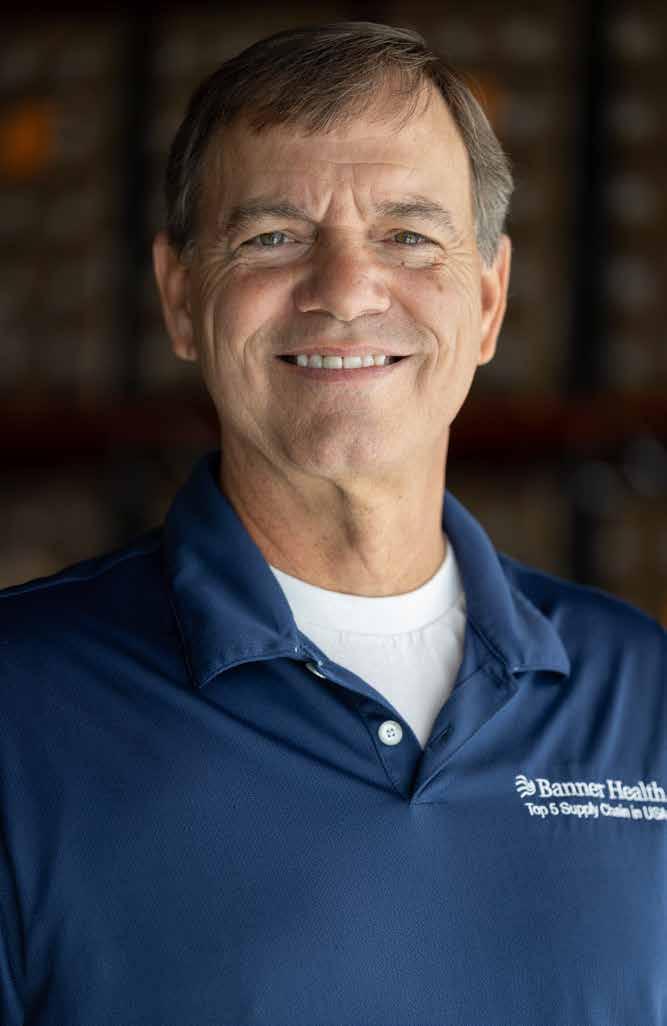
it was losing money,” Bowen said. “They had to go through a process of just trying to sell some assets, decide which assets were going to remain, and then create some strategies around the markets that Banner Health was still in and turn the organization around.”
` Performance. Banner Health team members called this the “Do It” phase from 20032006. “Here we had to prove to everybody that we could reliably perform as an acute care hospital company and produce reliable results.”
` Growth. The “Grow It” phase lasted from 2007-2010. “A real focus on growth, and that was both acquiring hospitals and building hospitals.”
` Innovation. The “Change It” phase happened from 20112015. Banner doubled down on computerized physician order entry during this time and increased the quality of care significantly at every hospital.
` Industry Leadership. The “Lead It” phase covered 20162020, right up to the pandemic. “Banner Health worked to establish itself as a leader in the industry, not only in clinical quality, but also in supply chain and other facets of nonacute care and the successful introduction of a health plan – Banner-Aetna, which hastened Banner’s transition from fee-for-service revenue to valuebased care with income based on covered lives and a focus on keeping people healthy.
Within each of those organizational phases were supply chain objectives to meet. For supply chain, the “Fix It” phase involved
shifting from siloed goals to centralization, followed by employing IT tools and educating stakeholders during the “Do It” phase. Engaging physicians for standardization at scale came in the “Grow It” phase created a culture of supply chain being everyone’s business in the “Change It” phase. And finally, enterprise-wide optimization and network value creation became the norm in the “Lead It” phase.
Did growth only happen in the three years designated by the plan? No, Bowen said. Did the “Fix it” phase only last two years? No. But the idea was that whether it went two years, five years or even longer, everybody was focused on the next step. “The whole organization knew what was coming next,” he said. “So that’s what I thought was most powerful about this strategy. We’d have an annual leadership meeting to review what we’d achieved and what we still had left to go on each stair step. We were able to plot our progress.”
Proof of concept for a CSC
Although Bowen had experience in getting a consolidated service center strategy up and running, he and the leadership team at Banner Health wanted to execute theirs with a crawl, walk, run mindset. “The deal I made with our CFO was that we’d do a proof of concept,” Bowen said.
In 2004, Banner Health leased 50,000 square feet of a 200,000-square-foot building. Their return on investment proved good in a few short years and they leased the entire building in 2007. Banner Health soon added a pharmacy distribution and a compounding center.
When the real estate market crashed in 2009, Bowen saw the opportunity for Banner Health to buy the building. His boss agreed and they negotiated a favorable price for it. Owning the building was advantageous about a decade later when hospitals nationwide were facing a financial crisis.
In 2015, they added high-density pallet storage with automated shuttle capabilities to their CSC.
The CSC proved to be a “superior” asset during the pandemic, Bowen said, allowing Banner Health to hold enough inventory to mitigate outages and disruptions, resulting in a 100%
The IDN has moved to more domestic source products, more investments in domestic suppliers, and is pre-planning for substitutes. “We’ve had so many products go on back order, we have a playbook for every product about what are the substitutes,” Bowen said. “We have the ability to jump right into action as problems happen.”
Banner Health added surgical kit packing manufacturing in 2011 through American Contract Systems, which was later acquired by Owens & Minor. They provide the people and operations for kit packing for Banner Health, manufacturing more than 5,000 packs a week and over 260,000 packs a year. “The reason we wanted to get into this business was to control all the raw materials,” Bowen said. “We control everything that goes into our surgical packs and we’re able to make changes on the fly as things happen with recalls. We were able to control all the components, and we’ve been able to keep our costs flat.”
In 2012, Banner Health added a pharmacy robot to fill prescriptions. All of their Banner and Aetna insurance customers, plus all employees, get prescriptions through this mail order program.
success rate for procedures to be completed with zero cancelled due to lack of a supply item.
The CSC has benefited the IDN in more ways than just distributing supplies. The investment itself turned out to be fortuitous for the organization. Following the pandemic, a lot of health systems were losing money, including Banner Health. In the latter part of 2022, the head of real estate approached Bowen and the CFO about selling the CSC building to an investor and leasing it back. Warehouse real estate was in high demand due to an increase in shipping from online retailers and with the building sale, Banner Health put more than $50 million back into operations.
“We took advantage of buying low and selling high, and we sold the warehouse at the opportune time,” said Bowen. “We never had that as part of our business plan, but it turned
out to be a very fortunate event because the money that we were able to make from the sale took Banner from a year-end loss to a year-end gain. It was exciting to be able to have supply chain come to the financial rescue of the organization.”
Last summer, Banner Health Supply Chain Services (SCS) added a second distribution center and 100,000 square feet, allowing SCS to expand the number of SKUs and the amount of each product managed through the internal distribution center network.
Post-pandemic operations
In a post-pandemic world, Banner Health continues to focus on three traditional pillars: Cost, Quality, and Outcomes, while adding a fourth: Preparedness.
Prior to the pandemic, Bowen said Banner Health was very fortunate to have a CSC to allow for more inventory and not operate a LUM program, giving a cushion for all supply chain disruptions. “Now that we have experienced the pandemic, we have put off any thoughts of a LUM program,” he said. “We’ve purposefully chosen to stock more products at our CSC to help mitigate the disruptions. A lot of people think that the supply chain has recovered, but it really hasn’t. We still have supply chain disruptions happening every day.”
Even in late 2023, there were typically more than 3,000 items on back order every single day.
It’s been that way ever since the pandemic, Bowen said. Banner Health is stocking more products and moving to more multi-source agreements. “Having a sole source agreement, and

then the sole source can’t provide product, you automatically have to go out to the market and find more,” he said. “So, we’ve decided to move to more multisource agreements as part of our strategy. We’ve also decided to have more self-reliance and double down on our own consolidated service center capabilities.”
The IDN has moved to more domestic source products, more investments in domestic suppliers, and is pre-planning for
substitutes. “We’ve had so many products go on back order, we have a playbook for every product about what are the substitutes,” Bowen said. “We have the ability to jump right into action as problems happen.”
Premier, in partnership with its members, has created a program designed to promote domestic and geographically diverse manufacturing and ensure a robust and resilient supply chain for essential medical
products. The program is intended to provide a means to invest in or partner with businesses that can supply shortage products, co-fund the development of affordable products that address specific market needs and create strategic sourcing contracts to ensure continuous supply for Premier members and customers. “The program continues to be successful through investments or long-term purchasing commitments on these initiatives,” Bowen said.
The Prestige relationship has been extremely successful in giving Banner a domestic mask source that is competitively priced, Bowen said. “Banner has made Prestige our formulary mask and in doing so we have significantly outperformed based on our initial commitment. Within the exam glove category, we are in the process of moving to a domestic product for a portion of our exam glove utilization. Overall, we continue to explore several categories for domestic options that provide for a high-quality cost-effective option.”
Banner Health was recently awarded the 2023 Corporate PSWMSDC Spend – Regional and 2023 Corporate Total MBE Spend – Regional awards by the Pacific Southwest Minority Supplier Development Council (PSWMSDC). These awards recognize Banner Health’s commitment and contributions to supplier diversity and inclusion and the economic development of the communities we serve. This is the second time Banner Health has been recognized by the PSWMSDC. Banner Health also received the 2022 Corporate Total MBE Spend – Regional award.
The makings of a great team Bowen believes in the motto that you’re only as good as your last day’s work. One day you may have favorable market conditions, but the next day you may not. “It’s humbling to know that no matter how many things you’ve done well in the past, you’ve still got to figure out how to solve today’s problems,” he said. “Always be on high alert.”
“The SCS turnover rate has always been better than the benchmarks and the supply chain department also typically outperforms the benchmarks.”
The supply chain team often repeats a phrase from Banner Health CEO Peter Fine: “Leadership matters!”
To this end, Banner Health has a program in place to create a career path and journey for its
The SCS Leaders work to “ensure supply chain services is a great place to work” and they measure their progress and results by using an employee survey called “The VOICE Survey” which improves employee engagement and satisfaction.
Indeed, great strategies and great products do not make a great supply chain, he said. Great people make a great supply chain. “The people that run your supply chain are important,” he said. “Every member of my team has created our success. Every achievement that we’ve ever made was the result of a team effort.”
The SCS Leaders strive to create positive relationships with all their team members, ensuring they know they belong, and they are appreciated, Bowen said. “These efforts help us to hang onto the team members we have and retain them while they are on their Banner Journey.”
The SCS Leaders work to “ensure supply chain services is a great place to work” and they measure their progress and results by using an employee survey called “The VOICE Survey” which improves employee engagement and satisfaction.
employees. About 90% of Banner Health’s supply chain leaders are promoted from within. “It’s been one of the things that’s been attractive for people to want to join Banner supply chain is they know they’ve got a journey ahead of them that they can grow with us.”
Bowen wants for them what he has been able to enjoy in his four decades in the industry – a satisfying, exciting environment to solve real-world problems for our nation’s clinicians. And he’s more than happy to be the one giving a compliment or two that may jumpstart the next great supply chain leader career.
“I dedicated my career to supply chain based on one good compliment almost 40 years ago,” he said. “To this day, if any one of my team members gets a ‘Strong Work!’ from me, they know they are receiving my highest possible compliment and sincere appreciation.”
IDN News
54 HCA healthcare hospitals recognized as “America’s Best Hospitals” by Healthgrades
HCA Healthcare announced that 54 of its hospitals were recognized on the 2024 Healthgrades America’s 250 Best Hospitals list for superior performance in providing care for conditions and procedures across multiple specialty lines and areas. Using a methodology focused solely on patient outcomes, this award recognizes the top 5% of hospitals in the country for clinical excellence.
The ten HCA Healthcare hospitals recognized as America’s 100 Best Hospitals for being within the top 2% in the nation for consistent clinical excellence are:
` CJW Medical Center in Richmond, Virginia
` HCA Florida Aventura Hospital in Aventura, Florida
` HCA Florida Kendall Hospital in Miami, Florida
` HCA Florida Orange Park Hospital in Orange Park, Florida
` MountainView Hospital in Las Vegas, Nevada
` Rose Medical Center in Denver, Colorado
` Sky Ridge Medical Center in Lone Tree, Colorado
` Swedish Medical Center in Englewood, Colorado
` The Medical Center of Aurora in Aurora, Colorado
` Wesley Medical Center in Wichita, Kansas
Outpatient revenue has increased more than 40% compared to 2020
Recently, hospitals and health systems have experienced difficult years in terms of finance since the beginning of the COVID-19 pandemic. However, 2023 presented a more promising trend for hospitals and health systems. According to the latest data from Kaufman Hall, outpatient revenue has grown significantly, increasing by more than 40% compared to 2020.
The median calendar year-todate operating margin index for hospitals was 2.3% in December, according to Kaufman Hall. Provider productivity has increased, while expenses continue to outpace revenue growth. Improved margins may indicate that hospitals and health systems are taking proper steps to adapt to the new environment, according to Kaufman Hall.
Ardent Health Services notifies those impacted by ‘cybersecurity incident’
Ardent Health Services recently reported that certain individuals whose personal information was involved in the November 2023 “cybersecurity incident” are now being notified. On Nov. 23, 2023, Ardent discovered a “ransomware incident” that impacted its network and they immediately notified law enforcement. Ardent Health notified officials
and successfully ended unauthorized access. According to Ardent Health, some of the breach contained documents with personal patient information. Patients are now being notified through letters in the mail regarding the November data incident.
CommonSpirit physician recognized for efforts to enhance care quality
There is tremendous amount of wasteful spending in the U.S. healthcare system, and at the same time, large numbers of patients and would-be patients can’t afford healthcare, as Thomas McGinn, M.D., M.P.H., of CommonSpirit Health noticed in his early years as a physician. Today, Dr. McGinn is the Executive Vice President of Physician Enterprise at CommonSpirit Health. A practicing internal medicine physician, he is a nationally recognized researcher with appointments at Baylor College of Medicine and Creighton University School of Medicine.
With AHRQ support, Dr. McGinn has developed clinical prediction rules and integrated them into electronic health record (EHR) systems, accelerating their adoption and use. Dr. McGinn started working on clinical prediction rules to estimate the probability of a disease or clinical outcome. This work went on to enabled the development of a publicly available survival calculator for hospitalized COVID-19 patients.
It’s true. The PURELL® brand is trusted and preferred by healthcare workers.
But more importantly, we work tirelessly to earn that trust.
It’s true. The PURELL® brand is trusted and preferred by healthcare workers. But more importantly, we work tirelessly to earn that trust.
Our hand hygiene is gentle on hands, even with frequent use. And our powerful surface products can even be used near patients and on electronics.
Our hand hygiene is gentle on hands, even with frequent use. And our powerful surface products can even be used near patients and on electronics.
The Difference Is Clear.
It’s true. The PURELL® brand is trusted and preferred by healthcare workers. But more importantly, we work tirelessly to earn that trust.
The Difference Is Clear.
Our hand hygiene is gentle on hands, even with frequent use. And our powerful surface products can even be used near patients and on electronics.
The Difference Is Clear.
Contact your distributor or GOJO representative today.
Contact your distributor or GOJO representative today.
Contact your distributor or GOJO representative today.

Navigating the Future
Observations on AI in the medical supply chain
 Artificial intelligence is changing every aspect of healthcare and healthcare distribution. I’ve seen it first-hand at HIDA’s conferences, such as Streamlining Healthcare and MedSupplyChain. At HIDA, we’ve been actively engaging stakeholders to discuss the capabilities and challenges for artificial intelligence in healthcare distribution. Our members are eager to learn more about AI, and are happy to share some of the insights and cases studies they have gained from its application.
Among the observations I’ve seen about AI in the medical supply chain are the following:
AI Helps Understand Supply Chain
Challenges. Thanks to AI, all stakeholders in the medical supply chain – manufacturer, distributor, provider – can be notified simultaneously when there is a shipping issue that may delay delivery. Being able to quickly identify and communicate problems allows us to pivot more quickly to solutions. Recently, one healthcare distributor used artificial intelligence to deal with shipping delays caused by low-water levels in the Panama Canal. Within 50 minutes of learning of a delay, the AI system had mapped out a path to re-route the shipping containers, giving decision-makers real-time input they could use.
AI Gives Clinicians More Time for Patient Care.
The volume of medical data is accelerating, and clinicians are struggling to keep up. According to research from the National Institutes of Health (NIH), it would take a doctor 26.7 hours a day to handle the preventative task procedures their patient population needs. Approximately, 3 hours a day are dedicated to documenting clinical data. Faced with these burdens, it is no wonder that 81% of physicians report symptoms of burnout. AI can automate repetitive tasks such as routine data documentation and patient follow up communications. This reduces
the administrative burden on clinicians, freeing up their time to focus on care that benefits patients.
AI Needs Guardrails to Follow, Such as Patient Privacy. One healthcare distributor was using AI for demand planning, and the AI quickly became so sophisticated that it could predict medical supply needs in a single zip code. With this level of precision, however, it became possible to infer who in a neighborhood needed a particular surgery, which could be considered an invasion of medical privacy. Artificial intelligence is only as good as the data it is trained on – and the guardrails it is programmed to follow.
AI is No Substitute for Human Intuition. Artificial intelligence is intended to be a remedy, not a replacement for healthcare practitioners. While AI can offer solutions, it does not take the place of making decisions. Some experienced providers liken AI to a first-year resident in a hospital –they can be helpful to gather and synthesize data, but more experienced people should double-check their work to reduce medical errors.
As AI continues to advance, its transformative impact on healthcare promises to deliver improved patient outcomes across the continuum of care. HIDA will continue to convene discussions on how to best use this exciting new technology.
 By Wyeth Ruthven, Director of Congressional Relations and Public Relations, Health Industry Distributors Association
By Wyeth Ruthven, Director of Congressional Relations and Public Relations, Health Industry Distributors Association
Outlining Clear Marketing Goals
 Every successful plan takes steps, strategies, and goals to achieve a desired outcome, and creating a marketing campaign is no different.
To successfully advertise, it is important for companies in the supply chain industry to set marketing goals. Marketing goals track advertising progress and define a clear brand purpose in its advertising efforts. It is necessary for companies to reevaluate marketing strategies, determine campaign strengths and weaknesses, and plan accordingly for the new year’s marketing campaigns.
To properly do this, a company should understand what they are trying to accomplish with their marketing efforts. Goals could include increasing revenue, gaining a greater brand following, improving customer exposure to a brand’s products, and more.
Identifying a brand’s marketing goals is a process that is refined over time. Read on for the most common marketing goals to begin outlining your business’ marketing strategy:
No. 1: Foster Customer Relationships
Brands are most likely to advertise to gain more customers and to improve customer understanding of a product or service. Advertising campaigns are an opportunity for a brand to engage with customers and detail the features of its products. Brands can foster customer relationships
through social media campaigns, detailed website information, interactive customer ad experiences, and more.
No. 2: Market More Effectively
Marketing more effectively can include a deep research dive into a brand’s buyers/audience, focusing on the creation of content that is unique to a brand, gaining a better understanding industry competitors, and more.
No. 3: Brand Awareness
Brand awareness is familiarity with a brand, and increasing brand awareness includes digital marketing including social media, emails, newsletters, webinars, and more. Digital marketing efforts streamline product messaging directly to consumers, allowing brands to gain better overall circulation.
No. 4: Brand Development
Brand development is the process of refining a brand’s advertising strategy. Brands can evaluate marketing strategies that did and did not work, and from there, increase focus on the advertising strategies that were the strongest.
If your brand could use assistance with outlining its 2024 marketing goals, Share Moving Media can assist with content marketing guidance informed by over 30 years of experience in the supply chain industry. SMM can also help your company achieve marketing goals by helping create engaging ad content such as blogs, podcasts, written content, etc. Contact Scott Adams at sadams@sharemovingmedia.com to set up a time for a 10-minute marketing planning session today.

Health Impacts of Substance Abuse
American Heart Association study highlights nationwide link between substance abuse and cardiovascular disease.
 A human heart beats about 2.5 billion times over an individual’s lifetime, pushing millions of gallons of blood to every part of the body, according to Harvard Health Publishing. The heart is a tireless and constantly working organ, and so taking care of cardiovascular health is critical to overall well-being.
Substance abuse, however, remains a leading cause of death in the United States that directly impacts an individual’s cardiovascular health. According to the American Heart Association (AHA), cardiovascular disease deaths involving substance abuse rose an average of 4% per year from 1999 to 2019. Deaths in this category ticked up despite a nationwide overall drop in cardiovascular disease deaths.
Alcohol and opioids were among the primary substances associated with cardiovascular deaths related to stimulants, according to an AHA study published in the Journal of the American Heart
Association (JAMA) in January of 2024. Researchers conducting the study reviewed data from the Centers for Disease Control’s (CDC) Wide-Ranging Online Data for Epidemiologic Research (WONDER) database to analyze trends and determine the link between cardiovascular health and substance abuse. The WONDER database aggregates data across the U.S. from the National Vital Statistics System. Study findings highlighted the high cardiovascular health risk of many commonly abused substances. The AHA analysis also found that certain substances had higher rates of documented
cardiovascular disease in patients: 65% of cardiovascular disease deaths related to substance abuse were determined to be related to alcohol, followed by opioids (13.7%), cocaine (9.8%), stimulants (6.5%), sedatives (4.1%) and cannabis (0.5%).
The highest rate of usage of these substances was among adults ages 25 to 39 (5.3%), followed by adults ages 55 to 69 (4.9%). Rates of cardiovascular disease mortality related to substance abuse was higher in women (4.8%), as this group demonstrated larger increases in substance use and cardiovascular risk during the study period.
Researchers determined that the data may indicate that women face unique societal risks that could contribute to the increases noted in the study, according to the AHA. Other prominent increases in cardiovascular deaths associated with substance abuse were among American Indian or Alaskan individuals (5.4%), people living in rural areas (5%), and users of cannabis and psychostimulants (16.8%).
The overall rate of substance use-related cardiovascular deaths increased from 9.9 per 100,000 population in 1999 to 21.4 per 100,000 population in 2019, representing the average annual increase of 4%, according to the AHA.
The AHA study sheds light on the ongoing risk of common substances, and demonstrates the need to address amphetamines as a contributing factor to cardiovascular death. It also calls into action additional national public health efforts to support management of substance abuse, and an increased focus on attending to the socioeconomic factors that may contribute to higher rates of substance use.
Health News
Research reveals bacteria tied to young-onset colorectal cancer
New Cleveland Clinic research has mapped changes in tumorrelated bacteria to uncover potential new strategies to combat the rise of young-onset colorectal cancer (CRC) in people under the age of 50.
The research reveals differences in tumor-related bacteria associated with young-onset colorectal cancer. Published in eBioMedicine (part of Lancet Discovery Science), the findings could lead to new screenings or treatments for this population.
According to the American Cancer Society, the incidence and mortality of young-onset colorectal cancer have increased by 1.5% and 1.2% per year, respectively. If this trend continues, a Journal of the National Cancer Institute report estimates the incidence of colon cancer would double and rectal cancer would quadruple in this age group by 2030. Further research is needed into how lifestyle factors may impact gut bacteria.
HHS hosts
‘Food is Medicine’ Summit
The U.S. Department of Health and Human Services (HHS) recently hosted its first-ever Food is Medicine summit in Washington, D.C., an all-day summit for stakeholders at the intersection between food and health. Secretary Xavier Becerra opened the summit by announcing three new public-private partnerships with
Instacart, Rockefeller Foundation, and Feeding America. All three partnerships will support HHS’s nutrition goals.
In addition to the three new public-private partnerships, HHS released five Food is Medicine principles that will guide the Department’s work when it comes
to educating the public, changing public policies, and integrating nutrition in the services it provides. These principles include recognizing nutrition is critical to health, easy access to healthy food across the community, cultivating an understanding of nutrition and health, and more.
Symptoms that may require a consultation with a cardiologist

As people age, many start to experience more aches and pains throughout their bodies. While many symptoms can be chalked up to the natural aging process, it’s important to pay special attention to the cardiovascular system. The Mayo Clinic provided some warning signs for underlying problems, that often suggest you may need a referral to a cardiologist include:
` Chest discomfort.
` Shortness of breath.
` Swelling in your legs.
` High blood pressure.
` Abnormally fast or slow heart rate.
` Dizziness or fainting.
` Strong family history of premature heart disease or cardiac death.
` Leg pain or ulcers resulting from blood vessel diseases.
A cardiologist will evaluate your symptoms, review your medical history and may recommend diagnostic tests to appropriately diagnose the cause of your symptoms. The cardiologist also will help your healthcare team evaluate the best form of treatment for you.
Shipping Disruptions Delay Supplies
Busy shipping supply routes have experienced recent disruptions, resulting in delayed deliveries of critical medical supplies.
 The medical supply chain relies on an intricate system of shipping routes to deliver products on time.
A recent threat assessment from Healthcare Ready explored why some medical products are currently taking longer to get to their destinations. Healthcare Ready is a nonprofit organization that helps the national healthcare system respond to crises.
The 2024 Global Shipping Issues Threat Assessment highlights that there are two ongoing major supply chain disruptions:
The Panama Canal restricting ships and increased danger and vessel rerouting in the Red Sea and Suez Canal.
The Panama Canal
The disruptions in the Panama Canal have largely been caused by an unprecedented drought that started in late 2023. The current drought has Panama experiencing the driest months since 1950, according to BBC News. As a result, water levels in the canal have caused long wait times for vessels and lengthy shipping delays. Delayed ships are often carrying much-needed medical cargo onboard such as medications and supplies.
The Panama Canal is responsible for moving 80% of global trade, and authorities have placed restrictions on daily vessel transits
that are expected to remain going forward. Additionally, some ships are being forced to carry 40% less cargo to decrease weight in low-level water, according to Becker’s Hospital Review and Healthcare Ready.
Shipping vessels, as a result, are experiencing extended transit times. Ships going through the Panama Canal are facing constraints on capacity and size, often having to leave medical products behind.
Danger in the Red Sea
In the Red Sea, there has been an increase in attacks by Houthi rebels targeting commercial vessels, according to Healthcare Ready. Shipping conglomerates are taking measures such as halting shipments or rerouting around the Suez Canal and Red Sea to avoid attack.
The Suez Canal accounts for nearly 15% of global trade and almost 20% of container trade. With shipping vessels having to detour and reroute from the Suez Canal, they instead travel along the tip of Africa, which causes exorbitantly longer travel times.
Detouring from the Red Sea, and traveling around the southern tip of Africa adds an additional 10-12 days of sailing and an
additional $1 million in extra fuel, according to Healthcare Ready. Suppliers looking for alternative shipping routes to bypass this challenge have faced significant cost increases that in turn impact their consumers.
Also, many commercial vessels coming from China were using the Suez Canal due to the drought in the Panama Canal, and now face obstacles due to the Suez Canal dangers.
Impact on Healthcare Supply Chain
The global shipping crisis has caused significant delays for healthcare products. According to the Health Industry Distributors Association (HIDA), demand for shipping has drastically increased alongside shipping challenges, causing obstacles for the medical industry.
The shipping time for medical supplies in the ocean is currently 2.5 times longer than usual, and ports are experiencing delays of up to 3 times longer, per HIDA’s Shipping Challenges
Cause Medical Supply Delays report. Impacts have included delivery delays, constrained supplies for physicians, and increased costs for physicians.

Charlie Higgins: He never stopped learning
 Even after working in medical sales for 50 years, Charlie Higgins never stopped looking ahead. Higgins, who most recently served as executive director of the Health Industry Representatives Association, died January 22.
“As long as I knew Charlie, he was ALWAYS looking for what was ‘next’ and trying to get better and improve,” says Sidney Hobbs, who retired from Medline Industries in 2021 after a 25-year career and who credits Higgins with introducing him to the medical sales industry. “He was hugely successful but he never rested on his accomplishments. Charlie could have retired many years before he did, but he kept working because he WANTED to and that’s the way he was built.”
Born in 1940, Higgins received a bachelor’s degree in business administration from Auburn University and worked for a variety of medical companies over the years, including Cutter-Resiflex, Richards Medical, Jerome and Teleflex. He was a golfer and a Ford Mustang enthusiast, and he received his private pilot’s license in the early 1980s. He leaves behind his wife, Joan Nicholson Fish; a daughter, Shannon Reddish; a son, Chad Higgins; and seven grandchildren and eight great-grandchildren.
Charlie Higgins was a classic relationship-builder, according to those who knew him. “He never met a stranger,” says his daughter, Shannon Reddish, who serves as executive administrator of HIRA. “He loved to stay in
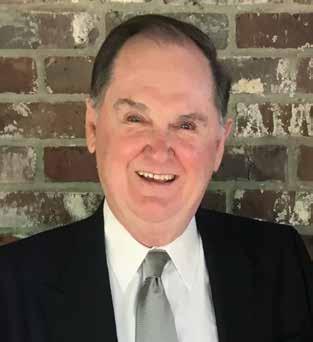
touch with people, both personally and professionally.”
“Charlie was a great leader and a great coach,” says Mike Peters, CPMR, president of SPM Healthcare and a former president of HIRA. “He was always totally prepared for meetings, doing more research and homework than most do in a lifetime. My favorite memories are times we spent in Washington, D.C., making the rounds with such organizations as MDMA, AdvaMED and FDA, and working with congressional committees regarding the independent rep function and commission protection.”
Rob Saron, retired past president and director of Bovie Medical (later, Symmetry Surgical) recalls working alongside Higgins in HIRA and the Healthcare Manufacturers Manufacturing
Council. “He genuinely cared about the organizations he managed and the individuals who were part of them.
A relationship guy
“Charlie was a ‘relationship guy,’” says Hobbs. “He was caring, thoughtful and the ultimate professional. He was always smiling and pleasant, and one of those guys you just wanted to be around. He was honest and always told you what you ‘needed’ to hear even if you didn’t want to hear it. His knowledge of the medical industry speaks for itself, but the common sense he also exhibited set him apart from others.
“I will always be grateful to Charlie and credit him 100% for creating an opportunity for me to live and work my dream,” he says. “After we were friends for many years and I had been in the industry for a while, Charlie was humble enough to call me periodically for advice or my thoughts on things. When your mentor does that, it truly makes you feel like you have accomplished something. It shows Charlie was always willing to listen to other perspectives.
“He truly helped me change my life and build a successful career. I am most confident I would not have had the opportunity without his assistance.”
Industry News
KARL STORZ unifies under central management team
KARL STORZ announced it will centralize management of its United States organizations, including its research and development, manufacturing, and commercial operations, to bring more innovative products to market worldwide with greater speed. Sonal Matai, who has led the US commercial business for two years, has been named President of KARL STORZ in the United States and will lead the effort to bring this ambitious transformation to life.
Midmark’s Ohio TechCred Program
Midmark Corp. has seen success from participating in Ohio’s TechCred Program, focused on reimbursement for upskill training of Ohio workers. As one of the largest employers in Darke County, Ohio, Midmark has participated in the program since its inception in 2019. To date, the company has been approved to upskill 256 employees for up to $360,000 in reimbursement from the program. The credentials include training in a wide variety of robotics- and other technology-focused areas, including CNC programming, Microsoft SharePoint and programmable logic controller (PLC).
“In today’s tech-infused economy, it is vital that businesses such as Midmark have the skilled workers we need to remain
innovative and meet customer and industry needs. I’m pleased that Lt. Governor Husted’s office understands this and offers programs such as TechCred to support Ohio businesses,” said Sue Hulsmeyer, Chief People and Administrative Officer for Midmark. “Through this program, we are able to provide learning opportunities to our teammates as part of their individual development plans. It’s a great teammate retention and recruitment tool.”
TechCred is a reimbursement program offered through the State of Ohio to help Ohio employers receive technology-focused, highquality training to upskill current and future employees at no cost to them. Businesses identify their needs, enroll their workers for training and are reimbursed by the state upon credential completion, receiving up to $2,000 per credential. The program has been instrumental in helping many Ohioans learn new, valuable skills and assisting employers in building a strong workforce with the skills needed to stay competitive and grow their businesses.
B. Braun appoints CEO Rob Albert
The Board of Directors of B. Braun of America Inc. (“B. Braun of America”) announced that they have appointed Rob Albert as Chief Executive Officer of B. Braun of America, succeeding Jean-Claude Dubacher who
is taking on global management responsibilities. Dubacher will remain Chairman of the Board of B. Braun of America.
Albert’s appointment will be effective April 1, 2024. Albert joined the company in 1984 as a manufacturing supervisor in operations. He has held roles in Operations, Sales and Marketing and has worked for B. Braun for almost 40 years. He has served as Senior Vice President & Chief Marketing Officer of B. Braun of America’s subsidiary, B. Braun Medical Inc., since 2012.
Henry Schein recognizes female athletic trainers in medicine
Henry Schein, in collaboration with the National Basketball Athletic Trainers Association, marked National Girls and Women in Sports Day on February 7 with a video recognizing the indispensable roles played by women athletic trainers in the world of sports.
“Athletic trainers play a pivotal role in maintaining the health and wellness of athletes at all levels of sports,” said Megan LoRé, General Manager of Operations for Henry Schein’s U.S. Specialty Distribution Group. “It is inspiring to see women continue to be trailblazers in the industry, making a difference in the lives of athletes and advancing the profession each and every day. At Henry Schein Medical, we remain committed
to elevating the profession and being trusted advisors, so athletic trainers can continue providing exceptional care.”
National Girls and Women in Sports Day honors athletic achievements by women, recognizes the importance of sports and fitness participation for all girls and women, and celebrates the power of women in sports and the continued push for equity. According to the National Athletic Trainers’ Association, 55 percent of its members are women. But there are significantly more male head athletic trainers in professional sports than women head athletic trainers. In men’s professional sports, a study published in the National Library of Medicine reveals that only 1.3 percent of head athletic trainers are women.
SEKISUI Diagnostics receives emergency use authorization for the OSOM® Flu SARSCoV-2 Combo Test
SEKISUI Diagnostics, a global medical diagnostics manufacturer, has received EUA clearance for the OSOM Flu SARS-CoV-2 Combo Test for use in professional and home testing settings.
The OSOM® Flu SARS-CoV-2 Combo Test is a lateral flow immunochromatographic assay intended for in vitro rapid, simultaneous qualitative detection and differentiation of influenza A and influenza B nucleoprotein antigens and SARS-CoV-2 nucleocapsid antigen. As with other OSOM Rapid Tests, it is made in the USA and supported by a highly skilled technical support team of medical technologists/professionals.
“The utility of detecting COVID and Flu on one test is
now more important than ever having moved into the endemic phase of COVID. The OSOM test is the first antigen, visual, home test to receive EUA status, which allows us to get these diagnostic tools into the hands of healthcare providers and consumers well before the next respiratory season. This helps minimize the spread of these diseases and allows prescribing appropriate treatments once viruses start circulating.”, said Lee Lipski, Sr. VP, Strategy & Business Management.
Everside Health and Marathon Health announce merger
Everside Health and Marathon Health announced their merger to deliver primary care, mental health, occupational health, musculoskeletal and pharmacy services. Both companies are providers of advanced primary care and occupational health. The companies serve a combined 2.5 million eligible patients through more than 680 health centers across 41 states. The merger of Marathon Health and Everside Health unites two leaders of the advanced primary care industry, and will operate going forward as Marathon Health.
Sentara Health and RhythmX AI collaborate to advance primary care
RhythmX AI, a generative AI-native company focused on whole-person care through generative AI, announced a strategic partnership with Virginia-based Sentara Health, one of the top 20 largest not-for-profit integrated health care delivery systems in the country.
Together, RhythmX AI and Sentara are building the next
generation of hyper-personalized primary care for clinicians and patients. With RhythmX AI’s predictive and generative AI platform, Sentara primary care clinicians will have access to next-best clinical actions surfaced directly from the relevant clinical and payor guidelines, earlier disease detection, underlying EMR data analyses, and documentation support.
“Our vision is to infuse personalized clinical intelligence into every visit and treatment so that physicians can deliver more personalized care while returning the joy of practice,” said Dr. Jordan Asher, MD, MS, Executive Vice President and Chief Clinical Officer for Sentara. “Sentara and RhythmX AI’s joint vision is an important part of the future where all clinicians are seeing hyper-personalized intervention recommendations based on clinical, social determinants of health, mental health, and lifestyle aspects of patients that treat both the physiologic dynamics of their clinical condition and their diseases of life.”
“RhythmX AI and Sentara are truly embarking on the next evolution in primary care delivery together,” said Michael Kalishman, Chief Venture and Innovation Officer at Sentara. “With our shared vision for the future, Sentara is excited to partner its leading clinician expertise and primary care redesign approach with RhythmX AI’s predictive and generative AI platform. Together, we envision a new future for primary care where patient access, quality of care, and the joy of practicing medicine are all possible again through a brilliant combination of leading clinicians and technology enablement.”




Choosing Cabinetry that Brings Value
Cabinetry design can determine the value and benefi t it brings to the clinical environment. Medical-grade cabinetry can have a signifi cant impact on effi ciency, safety and the healthcare experience. While lower cost alternatives may seem like a good option, there can be additional associated costs. Involving us earlier in the project can take the pressure off you and help ensure the cabinetry your customers choose provides lasting value while minimizing additional expenses. See why lower cost isn’t always best at: midmark.com/cabinetryvalue
Scan to view the 2 Minute Drill on RepConnect.



























